Matador Network's Blog, page 274
July 19, 2023
A Golf Guide To Fort Myers – Islands, Beaches and Neighborhoods
 A Golf Guide to Fort Myers – Islands, Beaches and NeighborhoodsTraditional golf coursesNext-level golf experiencesOff-course activitiesFood & drink refuelingPhoto: Teddy Tent 6395/Shutterstock
A Golf Guide to Fort Myers – Islands, Beaches and NeighborhoodsTraditional golf coursesNext-level golf experiencesOff-course activitiesFood & drink refuelingPhoto: Teddy Tent 6395/ShutterstockColor the Fort Myers area in shades of green and blue. Near-constant azure skies mean you can hit the greens on a daily basis all year round. With legends like hall-of-famers Patty Berg and Gene Sarazen in the local history books, this Southwest Florida region has built a robust reputation through the decades as a golfer’s haven, with more courses than you could ever hope to play in a single trip. More recently, Fort Myers has aced its game with new elite experiences that add high tech and celebrity power to the green-and-blue foundation.
Our guide explores these experiences, along with traditional golf links and the best ways to tour what’s superlative off the course — from the area’s famed beaches to its seafood-tastic dining scene. So grab your clubs and get in the swing of things here in the land of play outside.

This post is proudly produced in partnership with Fort Myers - Islands, Beaches and Neighborhoods.
Traditional golf coursesPhoto: Fort Myers – Islands, Beaches & NeighborhoodsMore than 90 golf courses carpet the Fort Myers area with lush, rolling greens that not only challenge golfers of every level, but also provide sanctuary for the soul as well as abundant varieties of birds and other wildlife. For more than 100 years, public courses have catered to residents and visitors, joined more recently by private club and resort courses designed by big-name golf course architects.
Fort Myers Country Club, Fort Myers
One of the oldest golf facilities on the west coast of Florida...
Visit
Fort Myers Country Club, Fort Myers
The story begins in 1917 with the first of two city-owned courses. Fort Myers Country Club lies midtown along royal palm-lined McGregor Boulevard. It’s seen its share of celeb golfers, including Thomas A. Edison and Henry Ford, who both had winter homes nearby. The course is known for its signature Donald Ross domed greens and short-game features.
Photo: kasakphoto/Shutterstock
Old Corkscrew Golf Club, Estero
A 'must-play' course in Southwest Florida...
Visit
Old Corkscrew Golf Club, Estero
A certified Audubon International Silver Signature Sanctuary, Old Corkscrew brings tough golf and old-Florida nature together on a 7,400-yard Jack Nicklaus course created amid a world of natural wetlands, bald cypress, scrub, and pinelands. Considered a “thinking golfer’s” course, it challenges as much as it charms, ranking as a top favorite in Southwest Florida.
Photo: trattieritratti/Shutterstock
Shell Point Golf Club, Fort Myers
Play on the meticulously manicured greens...
Visit
Shell Point Golf Club, Fort Myers
Close to Sanibel Island, Shell Point’s meticulously manicured greens are the centerpiece of an exclusive retirement community, but are open to the public. Its 70 acres of Audubon-certified environment and challenging fairways, threaded with sparkling waterways, appeal to all levels of golfers. Warm up on the driving range, fast putting greens, and short-game zone.
Photo: FloridaStock/Shutterstock
Coral Oaks Golf Course, Cape Coral
The par-72 course is both entertaining and challenging...
Visit
Coral Oaks Golf Course, Cape Coral
Cape Coral’s municipal course has eight lakes and 37 bunkers to contribute to its challenge and beauty. In addition to a full-service clubhouse pro shop, restaurant, and bar, it features extensive practice and instruction facilities, including a driving range with both natural and artificial grass.
Photo: Mr Somchai Sukkasem/Shutterstock
Reopening this fall
Restoring and renovating...
Visit
Reopening this fall
The following are opening soon with limited to full services after renovating, renewing, and polishing their courses: Dunes Golf & Tennis Club on Sanibel Island, historic Gasparilla Inn & Club in Boca Grande, and Saltleaf Golf Preserve in Bonita Springs.
Photo: Fort Myers – Islands, Beaches & Neighborhoods
Next-level golf experiencesPhoto: Topgolf/Michael BaxterIf you’re looking for more, know that Fort Myers can take your game a step beyond the traditional 18 holes at the local course. Elite experiences turn your golf outing into pure entertainment and social engagement — whether for the family or a group of friends.
PopStroke, Fort Myers
A super unique putting experience...
Visit
PopStroke, Fort Myers
The brainchild of PGA champ Tiger Woods, PopStroke debuted in Fort Myers as a next-level miniature-golf concept. In addition to two 18-hole designer putting courses, guests can enjoy outdoor gaming, a playground, and a full-service restaurant. Or have food and drinks delivered to you on the course. This spot could be a full day’s experience all on its own.
Photo: Fort Myers – Islands, Beaches & Neighborhoods
Topgolf, Fort Myers
The high-tech balls keep your score...
Visit
Topgolf, Fort Myers
Skip the sweating. Golf in air-conditioned comfort while service staff deliver food and drinks to one of 70 comfy golf bays equipped with HDTVs. Or you can hang out in the two-level bar and restaurant space. Topgolf is sweeping the nation with its innovative concept of balls that keep your score and almost a dozen different games for various levels of golfers. Ask about individual and group lessons to boost your skills.
Photo: Topgolf/Michael Baxter
Chips Sports Pub, Fort Myers
Step up to the screen and take a swing...
Visit
Chips Sports Pub, Fort Myers
In partnership with Topgolf, this virtual reality experience at downtown’s Luminary Hotel & Co. has two suites where you can play games from beginner and advanced golf to Zombie Dodgeball and more. Enjoy creative eats in the roomy bar space or have them delivered to tables within your own game room.
Photo: Chips Sports Pub and Luminary Hotel & Co.
Off-course activitiesPhoto: Fort Myers – Islands, Beaches & NeighborhoodsCome for the golf, stay longer to explore one of the country’s top coastal destinations. Make sure to build in some time in and around Fort Myers to take your vacation off-course and on-point, experiencing all the beaches, natural wonders, and water sports the region is known for.
Beach time
Spend time in the sun and surf...
Visit
Beach time
Synonymous with white-sand beaches and the gentle Gulf of Mexico waters that lap them, the Fort Myers area offers sun and surf to relax your golfing aches and those inevitable over-par frustrations. Sanibel Island’s beaches are famous for their seashell treasures, and Bowman’s Beach Park has some of the best pickings, thanks to its seclusion. For the most magical of sunsets, head to Captiva Island. Bring your furry friends along to Dog Beach Park in Bonita Springs. Lynn Hall Memorial Park on Fort Myers Beach is now open, so don’t miss a walk along the restored sand.
While the area continues to recover from Hurricane Ian, and some amenities may not be available at some locations, most of the beaches in the Fort Myers region are open and ready to welcome visitors. Visit the Beach Conditions page for the latest information.
Photo: Fort Myers – Islands, Beaches & Neighborhoods
Downtown River District, Fort Myers
Explore this eclectic community...
Visit
Downtown River District, Fort Myers
Fort Myers’ downtown streets take you from the Caloosahatchee River waterfront past historic buildings given new life as restaurants, shops, and attractions. The Edison and Ford Winter Estates is first on the don’t-miss list, with its 20+ acres of botanical gardens and historical buildings, including Edison’s Botanical Research Laboratory. And families especially will love the IMAG History & Science Center’s interactive exhibits, hands-on displays, and 3D movies.
By night, downtown comes to life with rooftop bars, waterfront restaurants, monthly art and music street parties, Historic Arcade Theatre, and the brand-new Caloosa Sound Amphitheater on the riverfront, which hosts live entertainment.
Photo: Fort Myers – Islands, Beaches & Neighborhoods
Boca Grande and beyond
Go on an island-hopping tour to explore the 100+ islands that dot the coastal waters...
Visit
Boca Grande and beyond
You can reach the charmed, historic village of Boca Grande on Gasparilla Island by car, but the best way to arrive is via an island-hopping trip from Captiva Island or from Bokeelia on Pine Island. On the way, pass sweeps of deserted beach on North Captiva Island and Cayo Costa. Stop at quaint Cabbage Key for a juicy burger and a cold pint.
In Boca Grande, you can rent a bike or golf cart to navigate the paved path, which was once a railroad track. It runs past beaches to the downtown depot and its one-of-a-kind shops and restaurants. Just down the street, the inimitable, grande-dame Gasparilla Inn & Club, dating to circa 1911, anchors the town.
Photo: Fort Myers – Islands, Beaches & Neighborhoods
Just add water
Endless options for an unforgettable on-the-water experience...
Visit
Just add water
One way or another, you must stir water into the ingredients of a well-rounded Fort Myers visit. Water sports range from a soothing kayak paddle through natural habitats on the Great Calusa Blueway Paddling Trail, to a pirate cruise, to a wildlife cruise with dolphins following in your wake. Try a lunch cruise to Cabbage Key or Useppa Island, get the gang together to paddle the Lagerhead Cycleboats party boat, or drift into the sunset on a catamaran cruise.
Photo: Fort Myers – Islands, Beaches & Neighborhoods
Food & drink refuelingPhoto: Jungle BirdWith all this exploration, you’re going to need ample chances to fuel up. Fortunately, it’s likely you’ll be able to find something delicious within a close walk or drive of the golf course or whatever attraction you’re checking out. In many cases, your best bet for après drinks and noshes is heading to the course’s “19th hole” in the clubhouse. From onsite restaurants and bars to other superb options throughout the region, here are some ideas to get you started.
Topgolf, Fort Myers
Did someone say doughnut holes?
Visit
Topgolf, Fort Myers
You can take advantage of Topgolf’s chef-driven restaurant and swanky lounge before or after playtime. Or just order your refreshments for delivery to your golf bay while you’re swinging. Specialties include flatbreads, burgers, kids’ chicken bites, and signature injectable doughnut holes with your choice of filling. Yum!
Photo: Topgolf
PopStroke, Fort Myers
Get your drinks delivered or try nearby fresh seafood...
Visit
PopStroke, Fort Myers
PopStroke staff, too, will deliver your thirst-quenchers right to the putting course. Order directly from the PopStroke app—the ice cream cones and milkshakes score high. Or, practically next door, Coldwater Oyster Market specializes in fresh seafood from the northern latitudes, prepared to perfection. Just 10 minutes away, you can dine with a view of the waterfront at Deep Lagoon Seafood & Oyster House. Come dinnertime, Harold’s Cuisine’s long-loved eponymous chef has perfected fine dining in an intimate setting with a popular whiskey bar.
Photo: Fort Myers – Islands, Beaches & Neighborhoods
Downtown Fort Myers
Stroll the epicenter of all things tasty...
Visit
Downtown Fort Myers
The epicenter of all things tasty and festive, Fort Myers’ downtown teems with places to drink, dine, and celebrate life. One of its oldest restaurants, Veranda, serves fine Southern cuisine in a setting of historic homes. Fort Myers’ Ford’s Garage, meanwhile, is the original in a chain that’s spread throughout the region, known for its burgers and craft beers.
Speaking of beers, Coastal Dayz Brewery and Millennial Brewing Company brew their own onsite. Downtown House of Pizza is everyone’s favorite for a slice, while 10 Twenty Five gastropub makes eight different varieties of Old Fashioneds plus an array of crafted cocktails, serving casual eats downstairs or on the rooftop. And Firestone Restaurant tops downtown’s collection of rooftop venues with its ever-popular Skybar overlooking the river and skyline.
Photo: Fort Myers – Islands, Beaches & Neighborhoods
Downtown Cape Coral
Broaden your horizons...
Visit
Downtown Cape Coral
Experience the first authentic tiki bar in Cape Coral at Jungle Bird. Indulge in the area’s best tiki drinks, such as the Banana Hammock (rum, citrus, and brûléed banana syrup) and The Lotus (tequila, Aperol, mezcal, coconut, and fresh lime). The bar also serves dishes like the Huli Huli Chicken and the Tropical Mahi with Caribbean hollandaise.
Sunday brunch at Cork Soakers Deck & Wine Bar will score you a plate of Chicken & Doughnuts. Or enjoy live music, food and drinks, and a range of unique homegrown beers at Big Storm Brewing Co. You can unwind in the expansive taproom or on the outdoor patio while savoring more than 20 craft pours.
Photo: Fort Myers – Islands, Beaches & Neighborhoods
Boca Grande
Delightful dishes and spectacular views...
Visit
Boca Grande
Enjoy a pleasant walk from Gasparilla Inn to the Boca Grande Bayou for a relaxed lunch or dinner at The Pink Elephant, a cozy restaurant that’s been serving excellent food, signature drinks, and impeccable service to both guests and locals for more than six decades. Executive chef and manager Rob Plesh uses his creativity to concoct dishes of fresh local seafood and regional comfort food, which can be enjoyed in the downstairs pub, upstairs dining room, or outside on the patio.
The combination of quality seafood and stunning waterfront views at Boca Grande Marina can’t be beat. Choose between two unique dining options: the quiet Eagle Grille upstairs or the casual yet lively Miller’s Dockside downstairs.
Photo: Irina Wilhauk/Shutterstock

This post is proudly produced in partnership with Fort Myers - Islands, Beaches and Neighborhoods.
The Fast and Luxurious Brightline Train Is Florida’s Best-Kept Secret
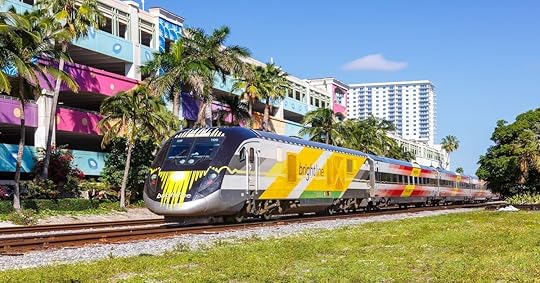
Florida is known for its sunshine, beaches, and theme parks, but there’s another attraction making waves in the Sunshine State – the Brightline train. This high-speed rail service is well-known to Floridians, but a relative mystery to everyone else. The train, however, is perhaps one of the best reasons to visit Florida, as it makes the state extremely accessible, connecting several major cities while also offering a comfortable and convenient passenger experience.
So, how does Brightline actually differ from typical trains? It breaks the traditional train travel mold with its high-speed capabilities, sleek design, and comfortable accommodations. Traveling at speeds up to 79 miles per hour, the Brightline whisks passengers between destinations in record time.. With spacious seating, free Wi-Fi, and a selection of food and beverages, Brightline delivers what feels like a first-class experience even in coach. In addition to its speed and comfort, the Brightline train also stands out for its eco-friendly approach. Brightline is actually building a new train out west – appropriately called Brightline West – connecting SoCal and Las Vegas – which is slated to be fully electric and emissions free.
Currently, Brightline services five destinations in South Florida, connecting Miami, Fort Lauderdale, and West Palm Beach with ease. But the most exciting development is the completion of the 170-mile stretch of rail connecting Central and South Florida. With this expansion, the Brightline now offers routes between Orlando and South Florida, effectively bridging the gap between two of the state’s fastest-growing regions.
Despite the premium service it offers, Brightline remains an affordable option for travelers. Fares start as low as $10 for a one-way ticket between Miami and Fort Lauderdale, with prices varying depending on the distance traveled and the level of service chosen. For those seeking an even more luxurious experience, Brightline’s Select Service offers additional amenities such as complimentary snacks and beverages, larger seats, and access to exclusive lounges.
July 18, 2023
Dine Inside a Cave at This Subterranean Restaurant Near Mexico City
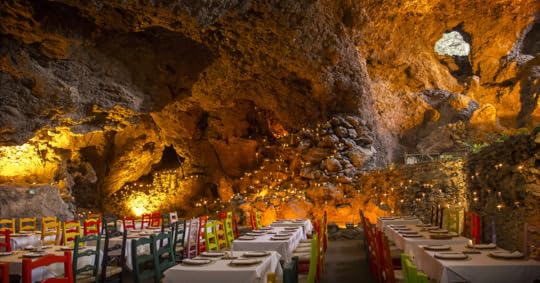
Just a short drive from Mexico City, you’ll find the enchanting archaeological site of Teotihuacán, a UNESCO World Heritage Site. This ancient city, famed for its monumental pyramids, also holds a lesser-known and more contemporary treasure – La Gruta, a restaurant located within a natural cave. The restaurant gives visitors the chance to have an unparalleled dining experience, combining delicious traditional Mexican cuisine with the awe-inspiring atmosphere of a cavernous setting.
@foodwtf Did you know that there's an underground cave in #Mexico that's now turned into a restaurant? Visit #LaGrutaTeotihuacan in#MexicoCity for a memorable dining experience with traditional Mexican cuisine

@DiariesofaTravelista #foodietiktok #foodietok #mexicocity #mexicofoodie #mexicanfood ♬ original sound – Food Worth Traveling For
Eating here is truly a surreal experience. As you enter the cave, you’ll be greeted by the warm glow of candlelight and the soothing sound of water trickling down the limestone walls. The restaurant’s interior is adorned with colorful tablecloths, traditional pottery, and indigenous artwork. As for the food, you’ll be able to indulge in mouthwatering dishes like mole poblano, chiles en nogada, and barbacoa, while being serenaded by live mariachi music echoing through the cave. La Gruta isn’t just a restaurant, either, but also a cultural experience that showcases Mexican traditions and customs. Throughout the year, the restaurant hosts various events and ceremonies honoring indigenous heritage, such as the Day of the Dead celebrations and pre-Hispanic dance performances. These events provide a unique opportunity for visitors to immerse themselves in the rich tapestry of Mexican culture, while enjoying an unforgettable dining experience.
Coming to La Gruta isn’t just about the dining experience, either. Before or after your meal, take the time to explore the nearby ruins of Teotihuacán, which once served as one of the largest and most influential cities in the ancient world. Climb the iconic Pyramid of the Sun and the Pyramid of the Moon, marvel at the intricate murals of the Palace of Quetzalpapálotl, and stroll along the Avenue of the Dead.
Before visiting La Gruta, make sure to plan ahead due to the area’s popularity. It’s best to visit Teotihuacán early in the day, as the archaeological site tends to get crowded, and you’ll want to have ample time to explore the ruins before heading to the restaurant. La Gruta is open daily from 11:00 am to 6:30 pm, and is located just a few minutes’ walk from the Pyramid of the Sun. Reservations are strongly recommended, especially during peak tourist season and weekends, to ensure you secure a table.
This Glacial Lake Is Only Reachable by a 6-Mile Hiking Trail
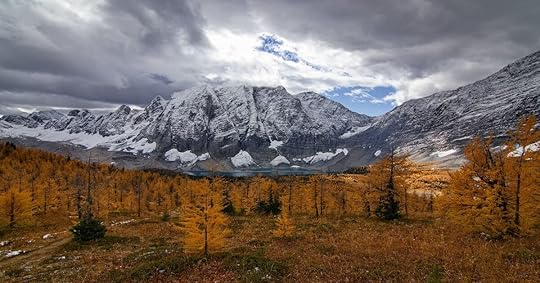
Located in the picturesque Kootenay National Park in British Columbia, Canada, Floe Lake is a glacial lake surrounded by towering cliffs and magnificent glaciers. You can only reach it via a 6 mile hike, but that’s partly what makes the lake so special.
The adventure begins with a scenic drive through the heart of Kootenay National Park. As you traverse Highway 93, keep an eye out for diverse wildlife such as elk, black bears, and bighorn sheep along the way. After about a 3-hour drive from Calgary or a 45-minute drive from Radium Hot Springs, you’ll reach the well-marked Floe Lake Trailhead parking lot. Be sure to arrive early, especially during peak season, as parking spaces can fill up quickly.
Embarking on the Floe Lake Trail, hikers are treated to a challenging yet rewarding 6.6 mile one-way trek with an elevation gain of 2,346 feet. The trail meanders through dense forests, meadows, and rocky terrain, with the occasional stream crossing to keep things interesting. While the hike typically takes four to six hours to complete, it’s essential to come prepared with proper hiking gear, clothing, food, and water, as well as checking weather and trail conditions before setting off.
As you crest the final hill and lay eyes on Floe Lake for the first time, the feeling of accomplishment and awe is unparalleled. The turquoise waters, fed by melting glaciers, are surrounded by rock walls that create a natural amphitheater. It’s the perfect place to take a break, enjoy a picnic, and capture stunning photos of the landscape.
For those wishing to extend their stay and fully immerse themselves in the beauty of Floe Lake, a backcountry campground offers 18 sites near the lake’s shores. Reservations are required and can be made through the Parks Canada Reservation System. Spending a night under the stars with the gentle lapping of the lake’s waters is an experience you’ll never forget.
Germany’s Deutsche Bahn Trains Make the Country One of the Most Easy European Nations To Navigate
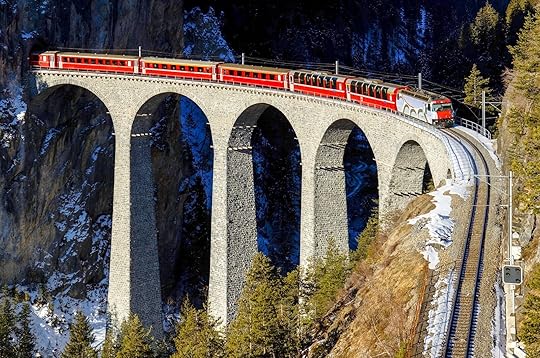
For Americans traveling abroad, few countries are easier to navigate than Germany. Though not technically an English-speaking nation, you’d be hard-pressed to find anyone working in tourism who doesn’t speak English. The country has plenty of amazing places to visit, the cities are clean, and travel within the country is blissfully easy. Much of this is thanks to the system of German trains known as Deutsche Bahn: Germany national railway that connects visitors to pretty much anywhere in the country from anywhere else in the country.
With nonstop flights from North America to most major German hubs, and easy train connections at the airports, exploring Germany by rail is a simple and relatively affordable way to see the cities, castles, and countryside that make the country so special. Here’s all you need to know about German trains and using the system, as well as how to take Deutsche Bahn to other gorgeous places across Germany’s borders.
What is Deutsche Bahn?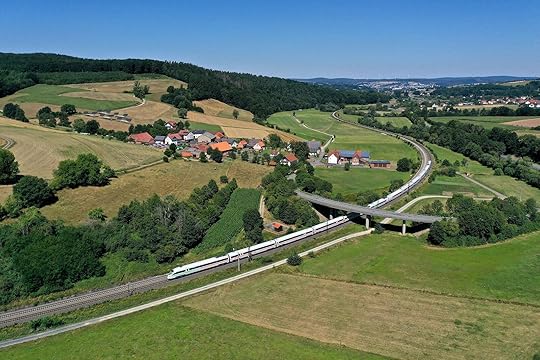
Photo: DeutschBahn AG/Oliver Lang
Deutsche Bahn is the largest transportation system in Germany, with 5,700 stations spread across 21,000 miles of rail. German trains in the system range from the high-speed, long distance InterCity Express (or ICE) trains to regional trains and local systems through rural areas like Bavarian Forest National Park.
ICE trains are Deutsche Bahn’s high-speed trains, used for travel between the country’s major cities. They may be German-based, but they also go to destinations outside Germany, whisking visitors to cities like Amsterdam, Prague, Budapest, and Luxembourg in just a few hours.
There are also regional bahn (RB) options in the German train system, which are kind of like local trains on the subway; they’re slower and make more stops at smaller stations. Between the regional bahn trains and the ICE trains are the regional express (RE) trains, which move between regions with fewer stops than the RB trains. Both can be recognized by the bright red cars. Though not as fast as ICE trains, Germany’s RB and RE trains are still an efficient method for reaching lesser-traveled parts of the country.
In big cities like Berlin, Hamburg, and Frankfort, Deutsche Bahn operates as the S Bahn. Imagine if the federal government operated the commuter/public transportation trains in large US cities, and you get the idea of the S-Bahn.
You can use German trains instead of taking extra flights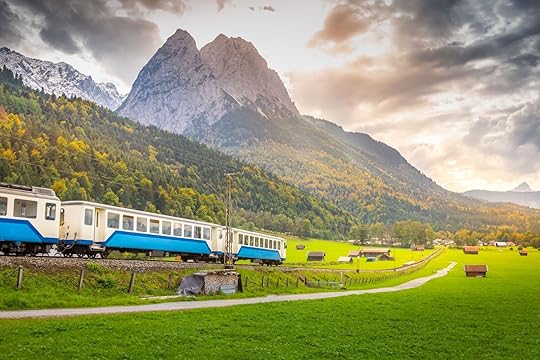
Photo: PositiveTravelArt/Shutterstock
Fun fact: Deutsche Bahn is the only train system in Star Alliance, an airline partnership that includes United Airlines and Air Canada in North America; and Swiss Air, Austrian Airlines, and Lufthansa in Europe. Including a train system in an airline alliance might seem unusual, but the partnership allows Deutsche Bahn to take the place of short, regional connecting flights. That means you can book a flight to Europe with a Star Alliance partner and have your ticket include a train connection from the major hub to a smaller city. For example, if you wanted to visit Germany’s Saxony region, you could fly Lufthansa to Hamburg, then transfer to a Deutsche Bahn train at the airport and be in Saxony in under two hours.
This hub-and-spoke system is both a way to support the county’s ambitious sustainability initiative, and a response to the EU’s curbing of short flights within the continent. So not only is Deutsche Bahn an easy way to traverse Germany, but it allows you to cut down on your carbon footprint if your final destination doesn’t have direct flights from North America.
How fast are ICE trains?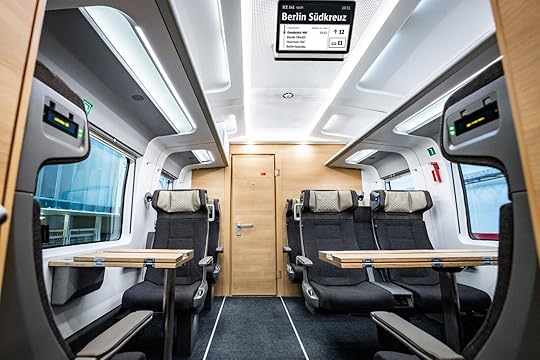
ICE trains are fast and comfortable for long-distance travel. Photo: DeutschBahn.com
ICE trains travel up to 200 miles an hour at top speed, but that doesn’t mean you’ll be covering the 383 miles between Munich and Berlin in less time than it takes to watch “Glass Onion.” They may be the fastest of the German trains, but they still make stops, and there are areas of track where the trains can’t operate at full speed. So even the fastest route between those cities takes four hours. When you book a train ticket, though, be sure to look and see that you’re booking an ICE train. Regional trains run this route too, and can take upwards of 10 hours to make the same trip.
Other German trains beyond Deutsche Bahn
Photo: Axel Redder/Shutterstock
Deutsche Bahn might be the largest rail line in Germany, but it’s far from the only one. For travel within the country, you can also take Flixtrain between cities. It’s a relative of Flixbus, which operates in the US.
If you’re traveling internationally, Austrian, Czech, Swedish, French, and other European rail companies also have routes to major cities from Germany that make local stops along the way. This includes night trains to places like Florence, Zurich, Vienna, and other international destinations.
Deutsche Bahn tickets and pricing
Photo: Lillac/Shutterstock
Costs for the various German trains depend on multiple factors, from the distance you’re traveling to how far in advance you booked your ticket. ICE trains, if booked far enough in advance, can cost as little as 13 euros, or about $14.50. Wait until the last minute to book a train from Berlin to Frankfurt, and you’re looking at upward of $180 euros (about $202). Budget about 100 euros for a long-distance, high-speed train, and you’ll be in the ballpark.
ICE train tickets can be bought up to six months in advance, which is how you nab those 13 euro fares. Shorter, regional trips are generally around 15-40 euros, with little change in cost no matter when you buy it.
If you’re planning on taking multiple German trains while you’re traveling, the best bet will probably be a Deutsche Bahn pass. The most useful is the Deutschland Ticket at 49 euros. It’s sold as a monthly subscription and covers all rail zones plus buses, which serves you well if you’re also riding public transportation in big cities. The only drawback is that it doesn’t include ICE trains, but plan far enough in advance and you can get those tickets at a reasonable price.
If you want something a little more all-inclusive, the German Rail Pass gets you access to every train in the Deutsche Bahn system, including ICE trains. You can purchase it to use over periods ranging from three to 15 days, either consecutively or spread out, depending on the pass you buy. Prices start at 153 euros.
Children under age six ride Deutsche Bahn for free, and children between 6-11 are free with any full adult fare.
Day trips on German trains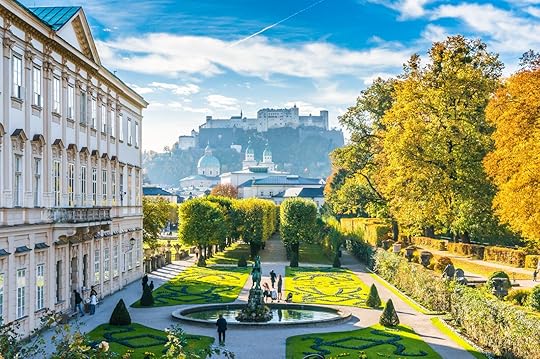
Photo: Canadastock/Shutterstock
Munich to Salzburg, AustriaYes, ok, the art and culture of Salzburg aren’t technically in Germany. But the ride through Bavaria from Munich is spectacular, and given how easy it is to reach Austria, it’s worth adding an extra day to your trip. You may want to stop in the town of Lindau on Lake Constance, which has a section of rail with stunning views of the alps. You can also take a regional train from Stuttgart if you’re traveling further south, or catch a short connector and visit the dreamy town of Hallstatt.
Hamburg to Sylt IslandThis little island in the North Sea is a popular weekend destination, mostly because of its pristine white sand beaches and towering dunes. It’s only accessible by train and ferry, and has been called the “Martha’s Vineyard of Germany,” thanks to its reliably clean air and sea breezes. A ticket to Sylt Island costs about 49 euros, and the trains cross a dam en route, providing an over-water scenic highlight before you’ve even reached the island.
Berlin to SaxonyThis rich, hilly region of southern Germany makes for a delightful destination to see via train, speeding by the Elbe River on your way from Berlin to the Czech border. Along the way, you can stop in the brilliantly rebuilt city of Dresden, which painstakingly restored many of the buildings destroyed in World War II. Now, it’s one of the most beautiful architectural cities in Germany. You can also stop in Schmilka, a 500-year old lumber town with cobblestone streets and historic homes. It’s become somewhat of a wellness village and a model of community sustainability, with a brewery and bakery that use mill-ground grains from local farmers.
Tips for traveling by German trains
Photo: DeutschBahn.com
Use the appYes, the last thing most people want on their phones is another app. But if you’re planning to travel on German trains, using Deutsche Bahn’s app will make your life exponentially easier. You can buy tickets at bahn.com or at a station, but download DB Navigator, and you can see every route in the system, book tickets, calculate fares, look at maps, and do pretty much everything else you need short of ordering curry wurst in the dining car. And once you leave Germany, you can just delete the app.
Make reservations for weekend travelSeats are typically easy to find on Deutsche Bahn trains, but if you’re planning to travel long distances on the weekends, make sure you book ahead. Trains can sell out, and sometimes they’re oversold, which means you may end up standing the whole way from Berlin to Prague. You’ll also want a reservation even if you have a Deutsche Bahn pass. While you may be able to physically get on the train, you won’t be guaranteed a seat or luggage space.
Order German food on boardDeutsche Bahn only delivers food to seats in first class, so take a stroll to the dining car if you want to sample classic German dishes. The menus change seasonally every three months, but always serves breakfast, lunch, and dinner, plus German wine and beer. Currywurst is the quintessential train food, and most trains have a vegan version.
Even during the warmer summer months, you’ll find passengers devouring hearty eintopf: a traditional beef stew made with vegetables and sausage or beef (or whatever other ingredients the chef decides to use.) 
Modern, Historical, Luxurious, and Over-the-Top Hotels Near the Tower of London
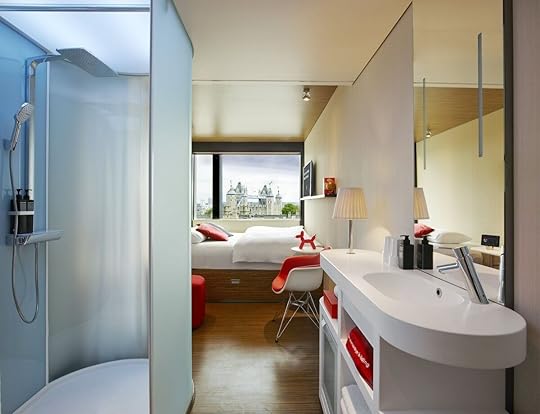
London is big and full of great places to visit, from museums to palaces, but if you plan strategically, you can spend your entire stay in the English capital in a hotel that will allow you to stroll to all the big sights — and even see them from your window. Booking a hotel near the Tower of London, a 1000-year-old historic royal palace, also means staying next door to Tower Bridge, St. Paul’s Cathedral, and being less than three miles away from the British Museum, Big Ben, and Buckingham Palace.
Taking a trip to Loondon? Check out Matador’s London accommodations guides:23 Airbnbs in London’s Trendiest NeighborhoodsThe Most Iconic Hotels in London in Walking Distance To Major AttractionsWhere are the best hotels to stay near the Tower of London?Hotels near the Tower of London
We hope you love the hotels we recommend! Just so you know, Matador may collect a small commission from the links on this page if you decide to book a stay. Listed prices are accurate as of the time of publication.
Four Seasons Hotel London at Ten Trinity SquareSee more photos
Few hotels’ exterior inspire a sense of grandeur more than the Four Seasons Hotel London at Ten Trinity Square, one of the most luxurious properties in the entire city. The immense building whose entrance is lined with Greek columns is so glorious that it might easily be confused for one of London’s excellent museums, or even a royal residence. With the Tower of London across the road from it (a five-minute walk), and the glass and steel skyscrapers of the financial district at its back, the 100-year-old hotel is one of the best locations in this part of the city. Inside, it’s just as dignified and opulent as outside, with a decor that mixes of historical and modern elements, and views that are sure to impress. The list of amenities is long, with a fitness center, a spa, an indoor pool, and several dining venues, including a seasonal rooftop lounge filled with flowers for those who like their awe-inspiring city views with a touch of greenery.
Where: 10 Trinity Square, London EC3N 4AJ, United Kingdom
Price per night: From $802
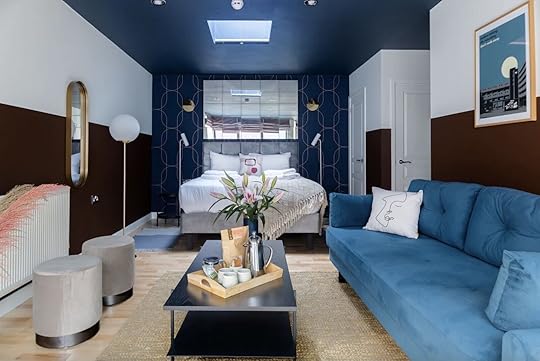 Photo: Expedia
Photo: Expedia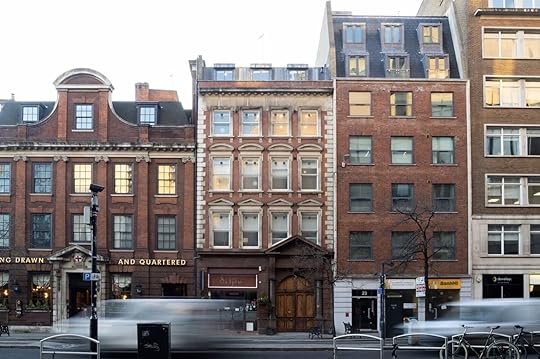 Photo: Expedia
Photo: Expedia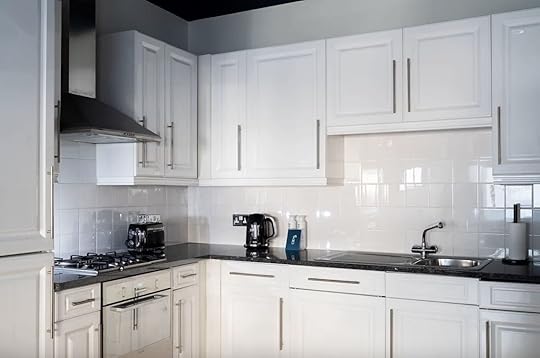 Photo: ExpediaSee more photos
Photo: ExpediaSee more photosIf you want to enjoy the amenities of a hotel while also taking advantage of the flexibility of a short-term rental, Bob W Tower of London is the place for you. Located just six minutes on foot from the Tower of London, this aparthotel that’s part of a Victorian brick building, consists of a beautifully decorated studio that can accommodate up to four guests (there is one king-size bed and a sofa bed). To make your stay more affordable, you can cook your meals in the fully equipped kitchen, take care of your laundry thanks to the washing machine, and send a few emails or do a little work using the fast and free WiFi. Because it’s an aparthotel, there’s 24/7 support, professional cleaning, and free access to the local gym.
Where: 24 Great Tower St, London EC3R 5AQ, United Kingdom
Price per night: From $394
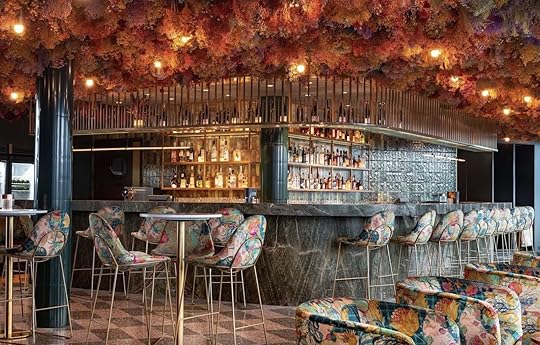 Photo: Expedia
Photo: Expedia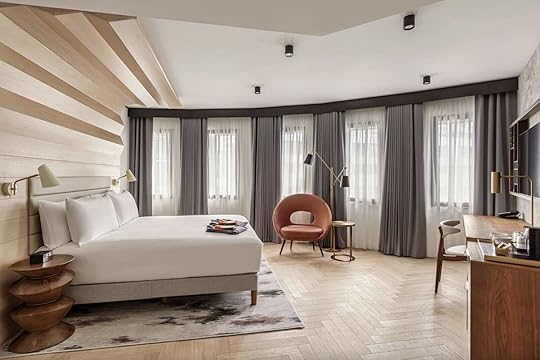 Photo: Expedia
Photo: Expedia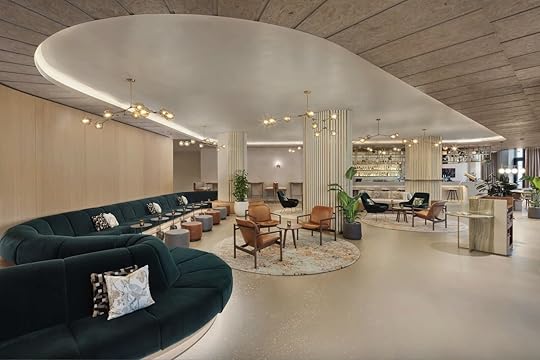 Photo: ExpediaSee more photos
Photo: ExpediaSee more photosA 10-minute walk to the Tower of London, an a six-minute stroll to The Gherkin, one of the most famous pieces of modern architecture in the financial district, Canopy by Hilton London City is a four-star modern property that provides its guests with every luxury, without breaking the bank. All 340 rooms are decorated with taste in a simple and chic style, with herringbone-patterned wooden floors, contemporary and elegant furnishings, and soft touches of color. The peaceful decor extends to the lobby and the dining venues. The cocktail bar Florattica Rooftop, located on the 11th floor from where to the views of the city are stunning, is an explosion of floral decor that is the textbook definition of “Instagrammable”. The St. Clare Coffee and Bar, inspired by the simplicity of Scandinavian design, is a lovely spot for snack and hot/cold beverages. There is a fitness center on site, and guests can rent bikes from the property to explore London on two wheels.
Where: 11-15 Minories, London EC3N 1AX, United Kingdom
Price per night: From $272
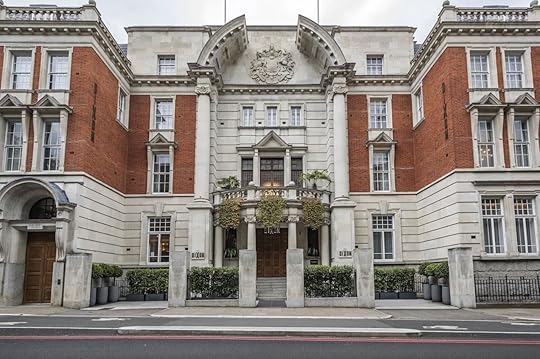 Photo: Expedia
Photo: Expedia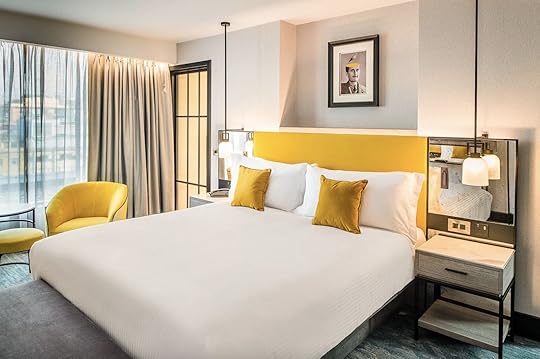 Photo: Expedia
Photo: Expedia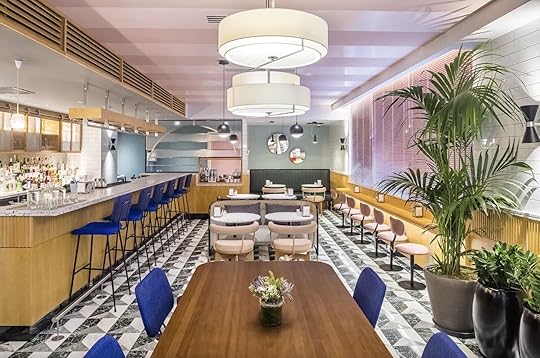 Photo: ExpediaSee more photos
Photo: ExpediaSee more photosThe 1906 building that host the Dixon hotel is a beautiful piece of Edwardian architecture that is located 11 minutes on foot from the Tower of London, across the Thames river via Tower bridge. While the exterior and the lobby of this historical property are all about classic elegance, the rest of is modern, colorful, and trendy with all 193 rooms and suites, as well as lounges and excellent dining venues, vibrating with bright hues, contemporary furnishings, and creative lighting fixtures.
Where: 211 Tooley St, London SE1 2JX, United Kingdom
Price per night: From $268
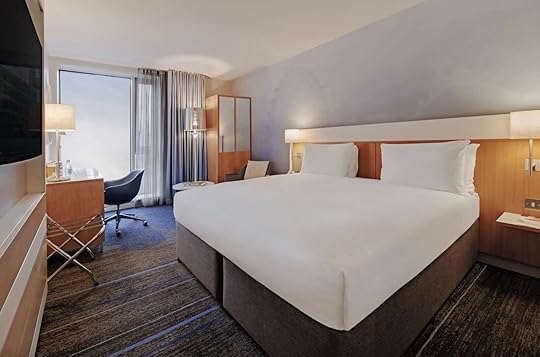 Photo: Expedia
Photo: Expedia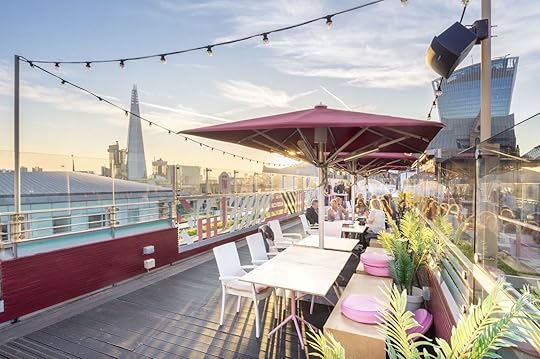 Photo: Expedia
Photo: Expedia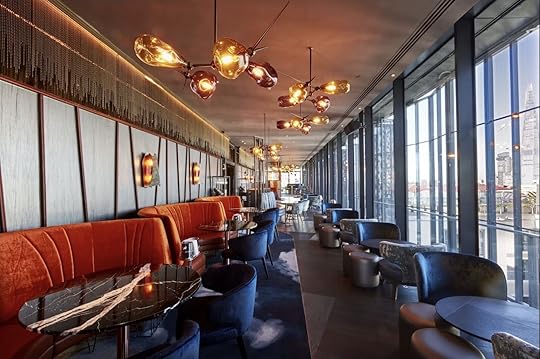 Photo: ExpediaSee more photos
Photo: ExpediaSee more photosThe DoubleTree by Hilton Hotel London — Tower of London delivers on many aspects of what we come to expect of a luxury property: It has an excellent location, being only six minutes away on foot from the Tower of London; it has a very well equipped gym; all 583 rooms are simple and tastefully decorated. But what distinguishes this four-star hotel from the pack is its nine dining and drinking venues, each more beautiful than the next, several of which provide views of the city (especially The Shard and Tower Bridge) that barely seem real.
Where: 7 Pepys St, London EC3N 4AF, United Kingdom
Price per night: From $268
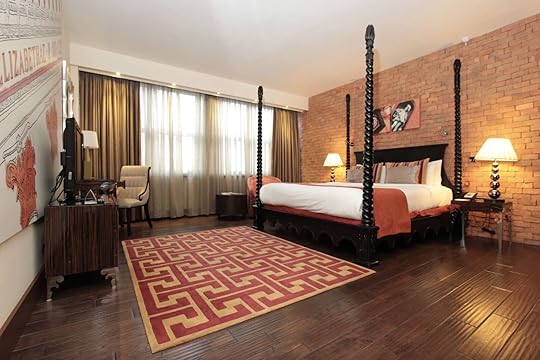 Photo: Expedia
Photo: Expedia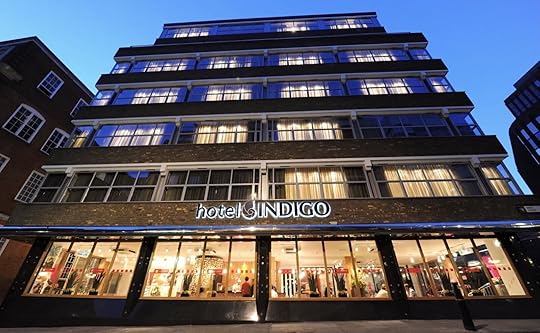 Photo: Expedia
Photo: Expedia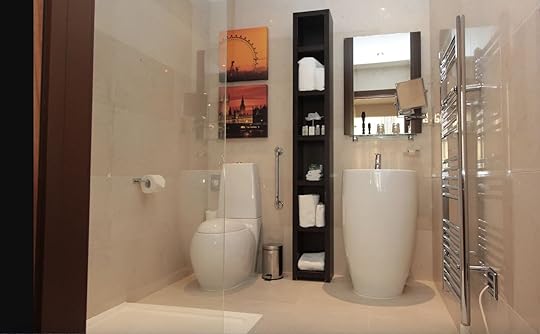 Photo: ExpediaSee more photos
Photo: ExpediaSee more photosAlthough its location should be its most appealing feature (10 minutes away from the Tower of London on foot), it’s the interior decor of the Hotel Indigo London Tower Hill that wins the hearts of travelers. This four-star property is on the small side with only 49 rooms, no bar, no restaurant, no pool, and no fitness club, but size and amenities don’t matter when you are fun, creative, and extravagant. All the rooms have unusually old-fashioned four-poster beds, heavily patterned rugs, brick walls, funky wallpapers, and the most bizarrely shaped toilets and sinks you’ve ever seen.
Where: 142 Minories, London EC3N 1LS, United Kingdom
Price per night: From $259
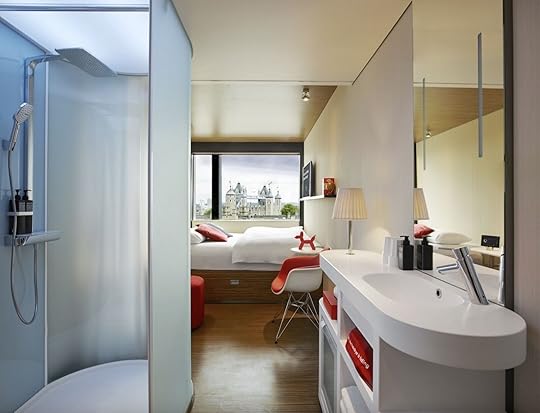 Photo: Expedia
Photo: Expedia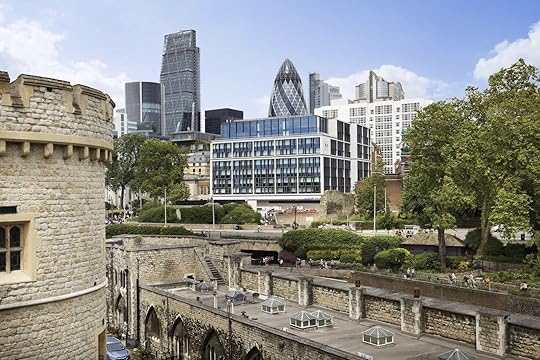 Photo: Expedia
Photo: Expedia Photo: ExpediaSee more photos
Photo: ExpediaSee more photosThe Citizen M Tower of London hotel is an ultra-modern, four-star property located five minutes on foot from the Tower of London. It is also mere seconds from the Tower Hill subway station where you can catch the District Line or the Circle Line, both of which will take you along the Thames river, all the way to Trafalgar Square, Big Ben, Westminster Abbey, and more iconic London sights. No matter their locations, all Citizen M hotels have artsy, contemporary, and playful decor, and the one near the Tower of London does not disappoint in that regard. There are 370 rooms in this property, many of which have fantastic views on the Tower of London, and all of which have fun, Pop Art-inspired decor sure to bring a smile to your face. If you can’t get your hand on a room with a view, all you need is to go visit the cloudM bar on the seventh floor to get your fill of amazing vistas. 
Where: 40 Trinity Square, London EC3N 4DJ, United Kingdom
Price per night: From $195
These Milan Hotels Put You in the Heart of the City’s Walkable Zone 1
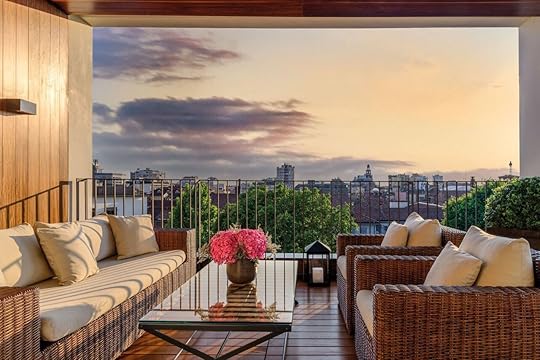
Synonymous with fashion, finance, and on-the-pulse architecture, Milan hotels reflect the character of Italy’s wealthiest city. Five-star properties place you steps from the Duomo or feature rooftop hangouts with insane views. As the capital of the Lombardy region, Milan also serves as the gateway to Northern Italy’s Lake District and the Dolomites. Whether you’re flying in to shop or cheer on your favorite football team, surrender yourself to Milanese luxury at these vogueish hotels in Milan, Italy.
Taking a trip to Italy? Check out Matador’s Italy accommodations guides: The 11 dreamiest Airbnbs in Italy These dreamy Amalfi Coast Airbnbs are the perfect seaside escape This Rome Airbnb’s windows open up to Trevi Fountain The Best Airbnbs Near Lake Como To Live Out Your Italian Dream These Florence, Italy, Airbnbs put you close to the Duomo and the best of the city The Best Airbnbs in Venice, From a Rialto Flat To a San Marco Studio The 7 Most Sought-After Airbnbs in Milan Close To Must-See Attractions
We hope you love the Milan hotels we recommend! Just so you know, Matador may collect a small commission from the links on this page if you decide to book a stay. Listed prices are accurate as of the time of publication.
Grand Hotel et de Milan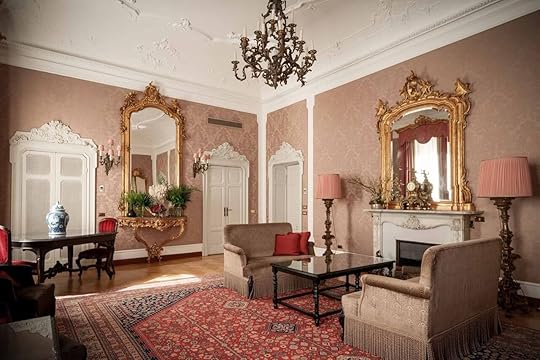 Photo: Expedia
Photo: Expedia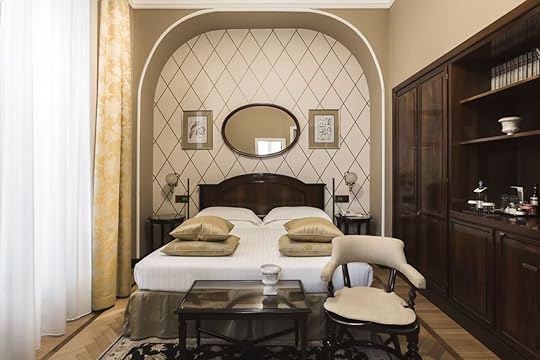 Photo: Expedia
Photo: Expedia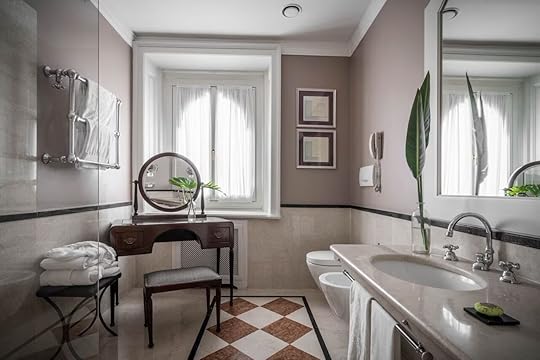 Photo: Expedia
Photo: Expedia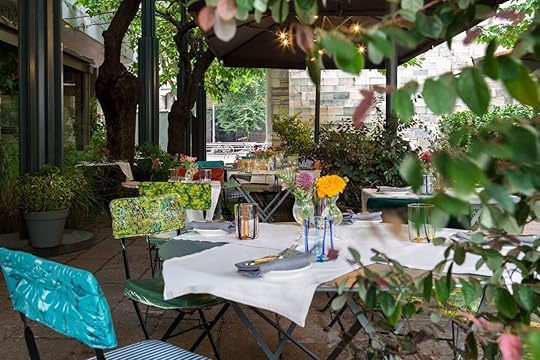 Photo: Expedia
Photo: ExpediaSee more photosAddress: Via Alessandro Manzoni, 29, 20121 Milano MI, Italy
Rates from: $738/night
The storied Grand Hotel et de Milan is one of the oldest luxury hotels in Milan. Since 1863, composers have checked in to fine-tune their operas, maestros have practiced recitals, and emerging designers have mingled with fashion greats. Culminating in the sublime Verdi, Dedicated Suites are personalized in honor of those who called the hotel their “Milanese house”.
Seventy-two traditional rooms are styled with antique furnishings, contemporary Italian fabrics, and all the modern trappings – air-con and Wi-Fi included. All-day dining and aperitivi are available across three lounges. One of the finest Milan hotels near the Duomo, a five-minute stroll brings you to Cathedral Square.
Armani Hotel Milan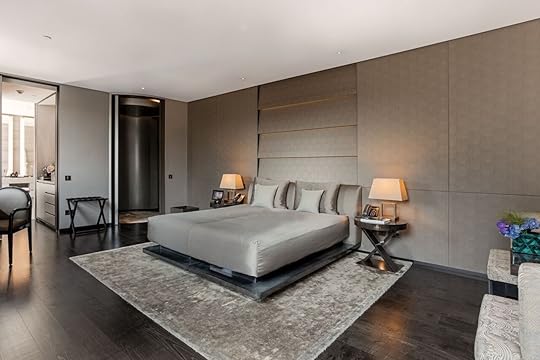 Photo: Expedia
Photo: Expedia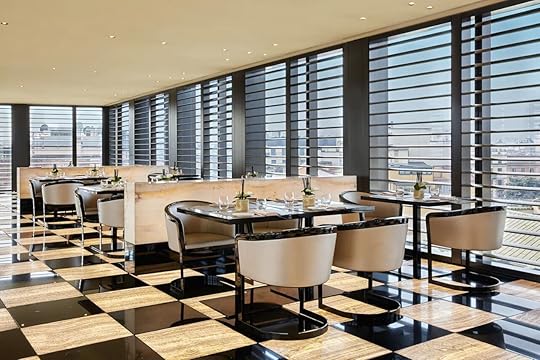 Photo: Expedia
Photo: Expedia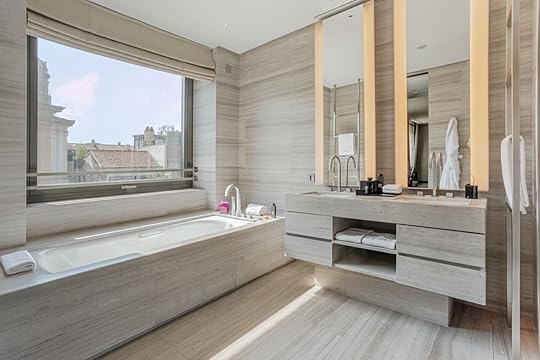 Photo: Expedia
Photo: Expedia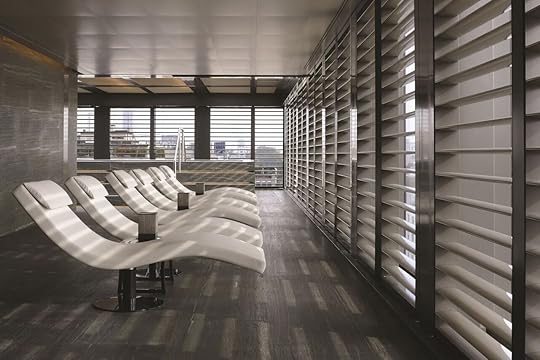 Photo: Expedia
Photo: ExpediaSee more photosAddress: Via Alessandro Manzoni, 31, 20121 Milano MI, Italy
Rates from: $1,424/night
After storming the luxury goods industry, Milan-born Armani turned its attention to à la mode hotels. Following hot on the heels of its big brother, the Armani Dubai at Burj Khalifa, the Armani Hotel Milan was ensconced in this Rationalist palazzo in the Centro Storico.
Tailored rooms in muted hues echo the Armani aesthetic of understated elegance. All units feature deluxe tubs, Nespresso coffee makers, and iPad control panels. Family rooms accommodate up to five and all guests have access to the indoor pool and Armani/SPA. In terms of where to stay in Milan for shopping, the Armani Hotel streamlines things with in-room made-to-measure and pret à porter services.
Bulgari Hotel Milano Photo: Expedia
Photo: Expedia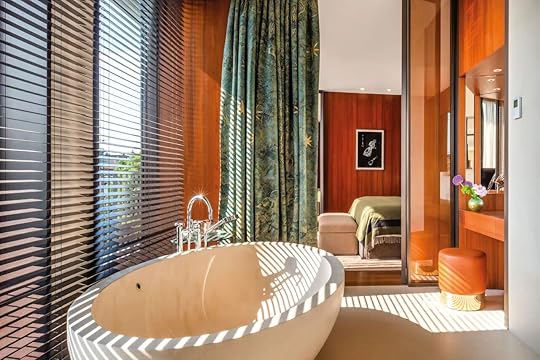 Photo: Expedia
Photo: Expedia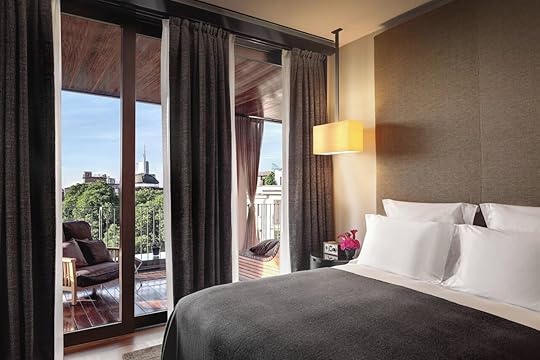 Photo: Expedia
Photo: Expedia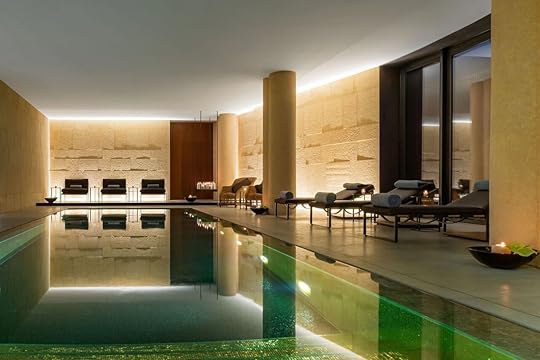 Photo: Expedia
Photo: ExpediaSee more photosAddress: Via Privata Fratelli Gabba, 7B, 20121 Milano MI, Italy
Rates from: $1,555/night
A second high-end fashion brand to try its hand at hôtellerie, the flagship Bulgari Hotel Milano occupies a Milanese palazzo clad in black marble and Vicenza stone. Glamorous rooms are kitted out with premium Italian furnishings and sketches of the label’s jewelry.
Suites overlook either the hotel’s green oasis or the Brera Botanical Garden while the Bulgari Suite opens out onto a private roof terrace. Perfect for a leisurely afternoon tea or aperitivo, the landscaped courtyard is a rarity in central Milan. One of the glitziest 5-star hotels in Milan, the place is rounded off with an indoor pool, sauna, and full spa service.
Hotel VIU Milan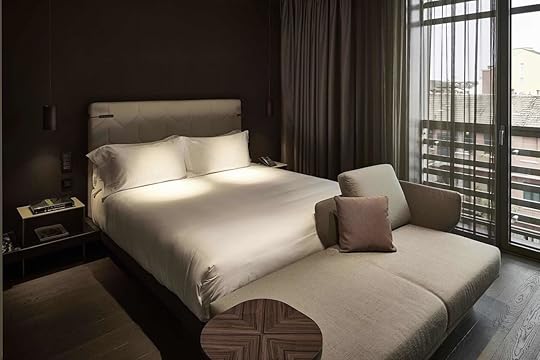 Photo: Expedia
Photo: Expedia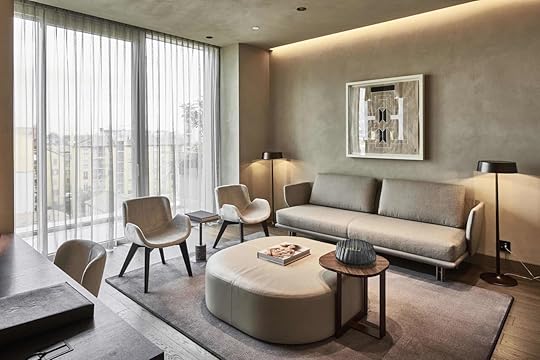 Photo: Expedia
Photo: Expedia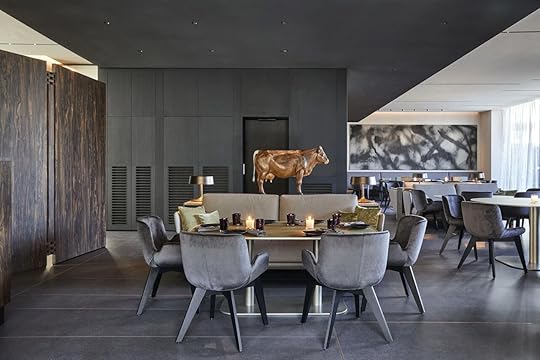 Photo: Expedia
Photo: Expedia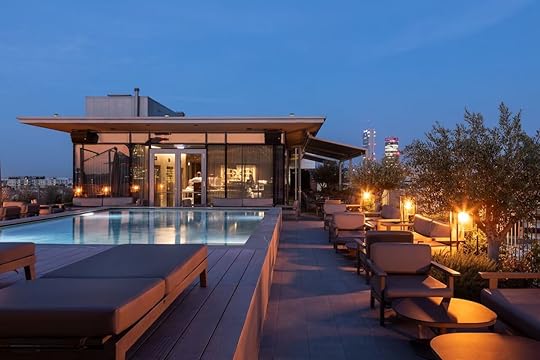 Photo: Expedia
Photo: ExpediaSee more photosAddress: Via Aristotile Fioravanti, 6, 20154 Milano MI, Italy
Rates from: $403/night
One of the best hotels in Milan with a rooftop swimming pool, Hotel VIU Milan looms above Chinatown on the outskirts of Zone 1. Sip a negroni at the poolside bar for a unique vantage point over the city of fashion. Engineered with sustainability at the forefront, the hotel is fronted by its own Vertical Garden where jasmine, roses, and ivy can be spotted from the street.
Cappuccino-colored rooms are designed for the modern minimalist, with superior options featuring a balcony or terrace. Yoga classes and childcare services are available. The food offering includes a buffet breakfast, Michelin-starred Milanese, and casual Italian with a Latin twist.
Château Monfort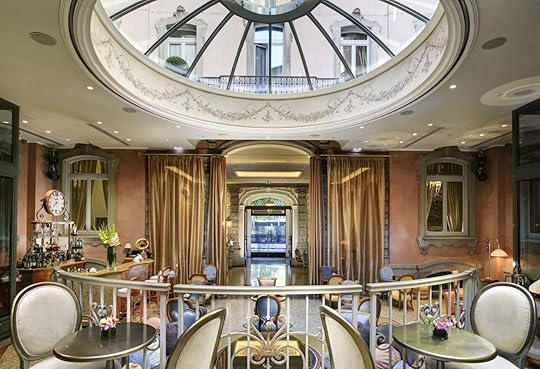 Photo: Expedia
Photo: Expedia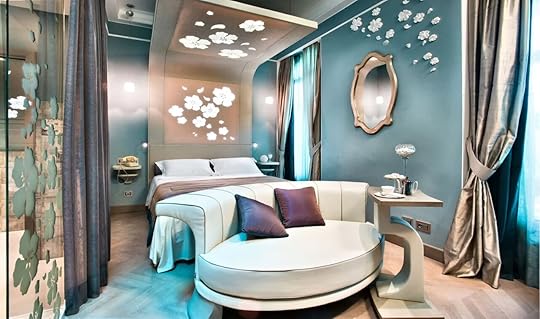 Photo: Expedia
Photo: Expedia Photo: Expedia
Photo: Expedia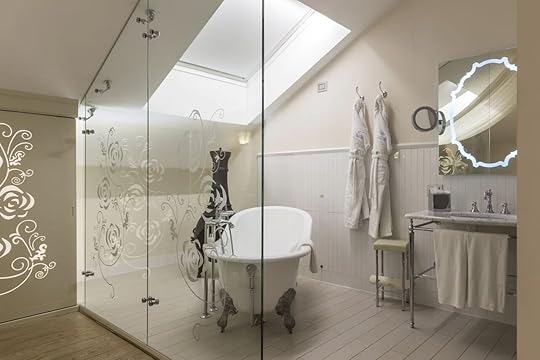 Photo: Expedia
Photo: ExpediaSee more photosAddress: Corso Concordia, 1, 20129 Milano MI, Italy
Rates from: $376/night
One for the daydreamers, Château Monfort is one of the best hotels in Milan for families and couples. All 77 rooms are inspired by fairytales, the arts, or the golden age of travel. Stepping into a “Civetta” feels like ambling through an enchanted forest while the “Traviata” brings bucolic France to central Milan. Unpack your gear into vintage trunks in the “Viaggiatore” or surprise the kids with a stay in the “Schiaccianoci” where nutcrackers ward against nightmares.
The Amore and Psyche Spa suite is available for exclusive hire. Never mind being fit for royalty, the dining salon is Mad Hatter-approved.
Park Hyatt Milano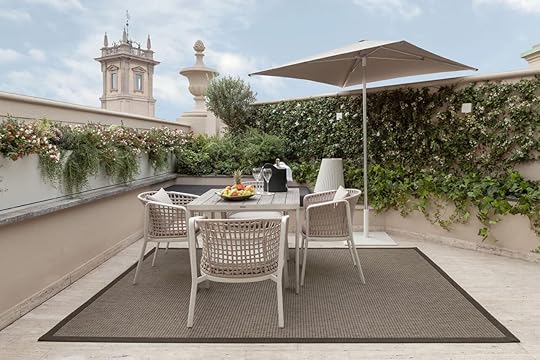 Photo: Expedia
Photo: Expedia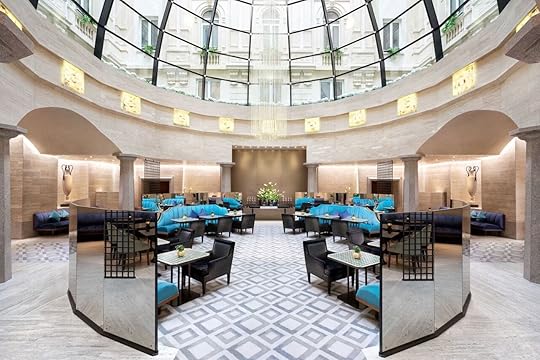 Photo: Expedia
Photo: Expedia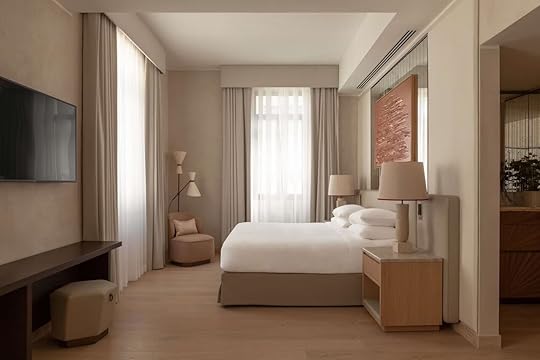 Photo: Expedia
Photo: Expedia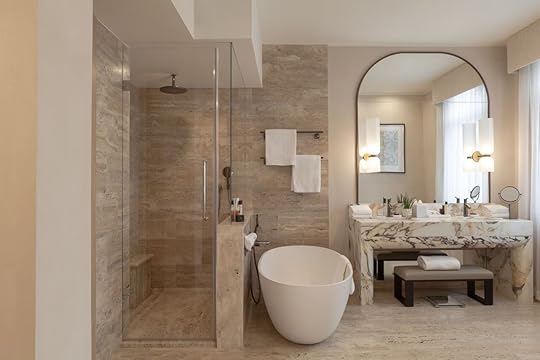 Photo: Expedia
Photo: ExpediaSee more photosAddress: Via Tommaso Grossi, 1, 20121 Milano MI, Italy
Rates from: $1,314/night
One of the best Milan hotels near the Duomo, the Park Hyatt Milan fuses over-the-top luxury with an unbeatable location. Steps from Galleria Vittorio Emanuele II, a selection of rooms grant direct views of the cathedral. All set out to showcase traditional Italian craftsmanship through the likes of Murano glass lamps, Medici marble work, and intricate mosaics.
Three upmarket eateries are joined by the seasonal al fresco bar, Dehors, open exclusively during the high season. Suites at this 5-star Milan hotel are a splurge but they do come with silk kimonos, whirlpool tubs, and private terraces.
ODSweet Duomo Milano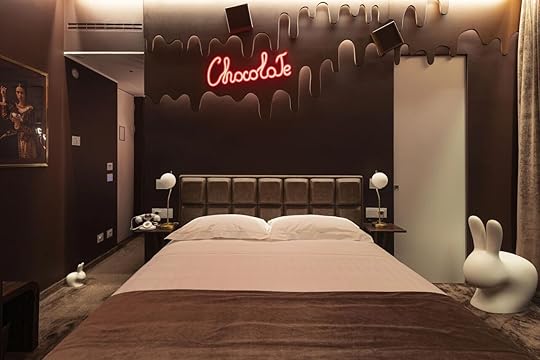 Photo: Expedia
Photo: Expedia Photo: Expedia
Photo: Expedia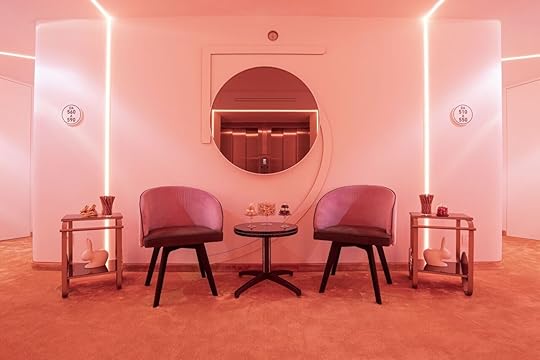 Photo: Expedia
Photo: Expedia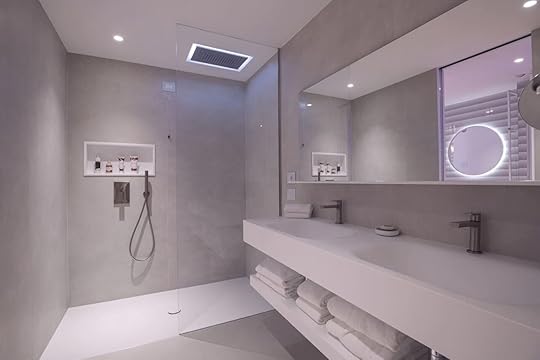 Photo: Expedia
Photo: ExpediaSee more photosAddress: Piazza Duomo ang, Via Giuseppe Mazzini, 2, 20123 Milano MI, Italy
Rates from: $443/night
Home sweet dome – ODSweet Duomo Milano is the world’s first “Sweet Hotel”. This boutique hideaway is one of the most unusual Milan hotels near the Duomo, where rooms are tributes to chocolate, marshmallows, and cotton candy. Outfitted with stools in the shape of bunnies, vintage photography, and neon gimmicks, all units come with sugary Sweet Corners.
Beyond the whimsical suites (or should we say, sweets), hotel guests and non-residents can sip spritz and pink milk on the Dome Rooftop with an epic perspective of the Gothic cathedral. Just don’t share your vacation plans with your dentist.
Milan Marriott Hotel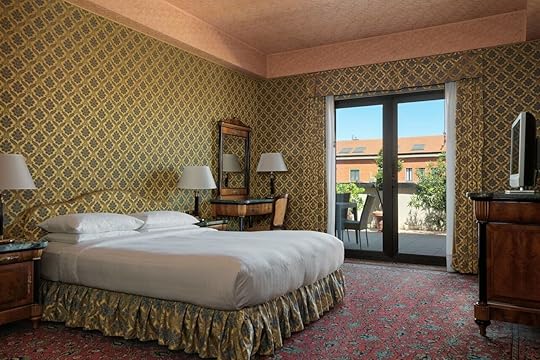 Photo: Expedia
Photo: Expedia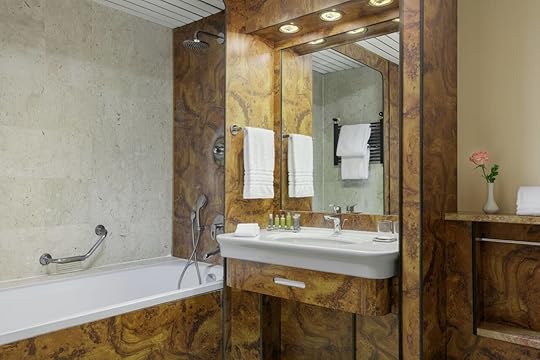 Photo: Expedia
Photo: Expedia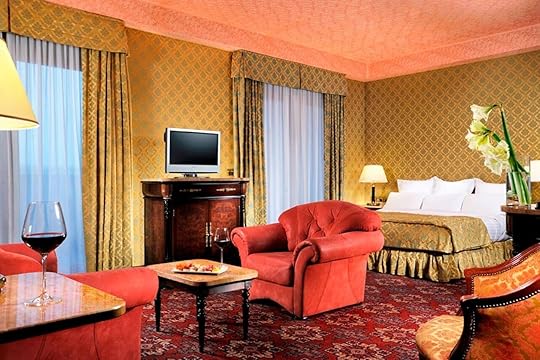 Photo: Expedia
Photo: Expedia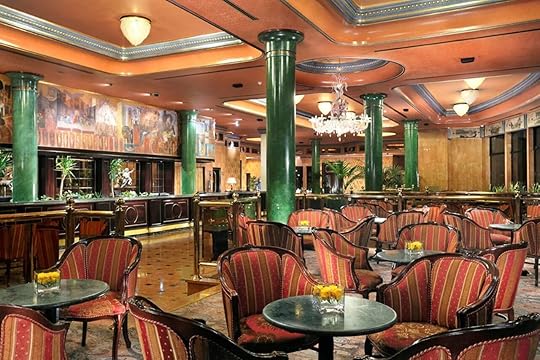 Photo: Expedia
Photo: ExpediaSee more photosAddress: Via Giorgio Washington, 66, 20146 Milano MI, Italy
Rates from: $528/night
Located in the Washington neighborhood, the Milan Marriott Hotel puts you at arm’s length from the sights. This residential area is where to stay in Milan for quick access to San Siro Stadium and National Theater CheBanca! as well as a shorter taxi ride to the international airport.
Always a no-brainer for simple comfort, the Marriott features spacious rooms with classic decor – a number of which have recently undergone a revamp. Room service is available 24/7 and Bar 66 has you covered for a nightcap. The pet-friendly Milan Marriott Hotel is a solid all-rounder for couples, families, and business travelers.
Palazzo Parigi Hotel and Grand Spa Photo: Expedia
Photo: Expedia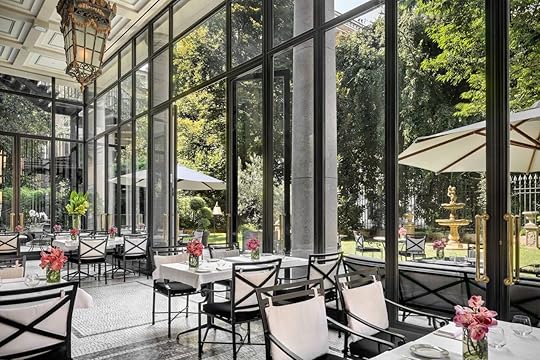 Photo: Expedia
Photo: Expedia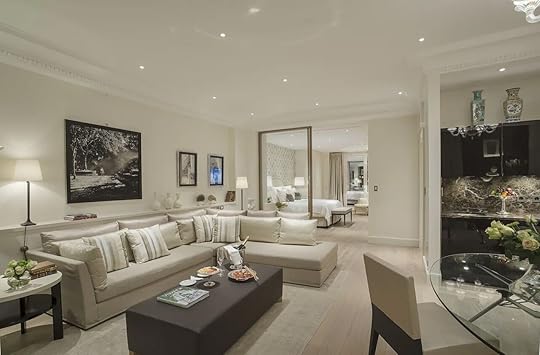 Photo: Expedia
Photo: Expedia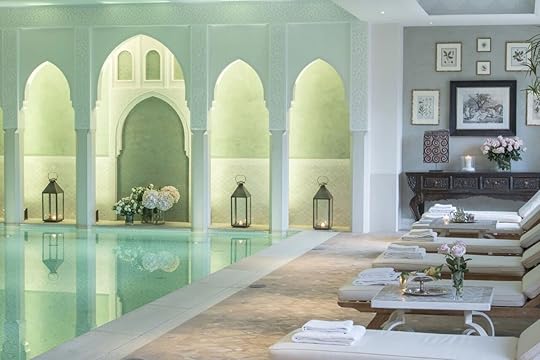 Photo: Expedia
Photo: ExpediaSee more photosAddress: C.so di Porta Nuova, 1, 20121 Milano MI, Italy
Rates from: $1,283/night
As the name suggests, the Palazzo Parigi Hotel is one of the best luxury hotels in Milan for a wellness retreat. Use of the pool, sauna, and hammam at the Grand Spa is included in the rate while treatments are available at an additional cost. Pampering aside, this palatial hotel unfurls into a breathtaking garden on equal footing with any public green space.
Plush rooms and suites follow Milanese or Parisian styling with original artworks and rich fabrics. All come with a patio or terrace, with Duomo or Sforzesco Castle views at a premium. The Porta Nova setting makes the Palazzo Parigi convenient for sightseeing, shopping, and Milano Centrale.
ME Milan Il Duca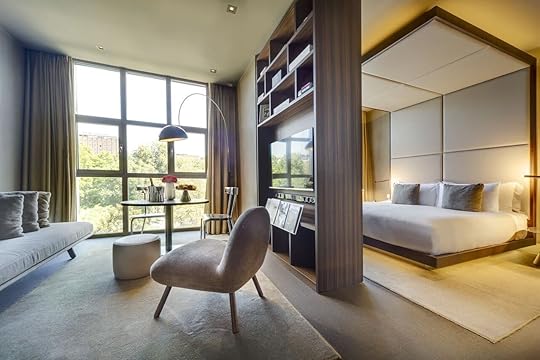 Photo: Expedia
Photo: Expedia Photo: Expedia
Photo: Expedia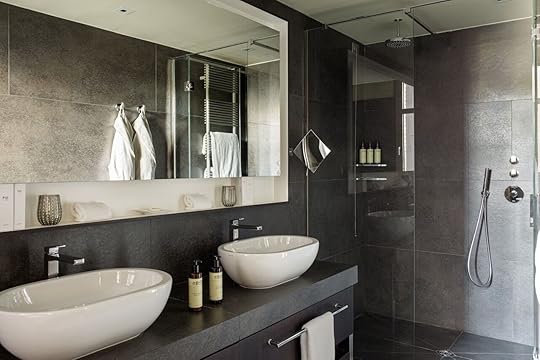 Photo: Expedia
Photo: Expedia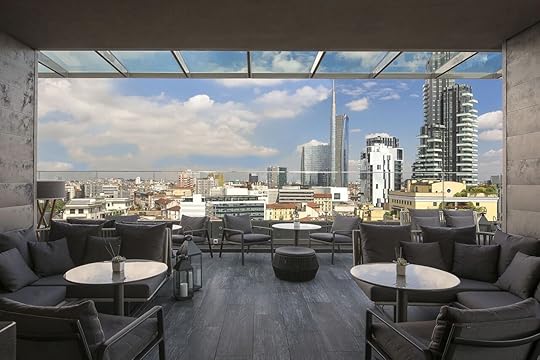 Photo: Expedia
Photo: ExpediaSee more photosAddress: Piazza della Repubblica, 13, 20124 Milano MI, Italy
Rates from: $440/night
Ten minutes from Milano Centrale Station, ME Milan Il Duca is one of the most atmospheric 5-star hotels in Milan’s Porta Nuova neighborhood. The rooftop cocktail lounge is a classy spot to catch the sunset with live DJ sets every Thursday. Popular with nearby workers, hotel guests get priority in this buzzing hangout. Down on the first floor, STK Steakhouse specializes in grilled meat but its fish and veggie dishes are just as satisfying.
Unpretentious rooms are accented with eucalyptus wood and beds dressed in Egyptian cotton linen. Coffee makers, posh bathing products, and “maxibars” are standard but only ME+ guests can stay at the top-tier suites.
Sheraton Milan Malpensa Airport Hotel and Conference Centre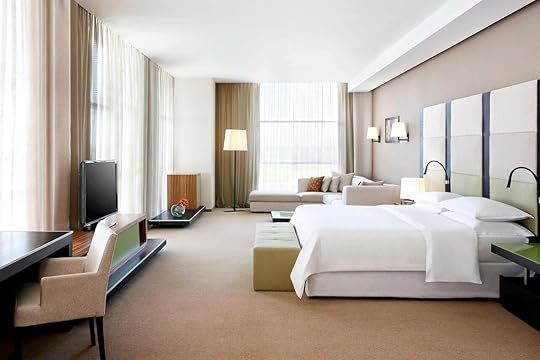 Photo: Expedia
Photo: Expedia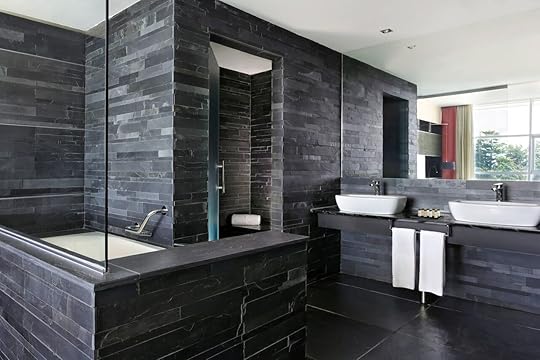 Photo: Expedia
Photo: Expedia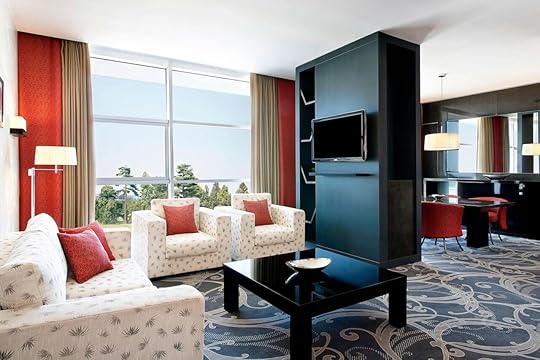 Photo: Expedia
Photo: Expedia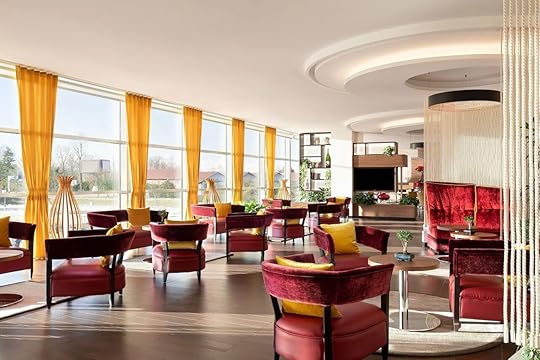 Photo: Expedia
Photo: ExpediaSee more photosAddress: Malpensa Terminal 1, S.S, 336, 21010 Ferno VA, Italy
Rates from: $238/night
Part of the Marriot umbrella, the Sheraton Milan Airport Hotel is the only in-terminal property at the Malpensa International Airport. The indoor heated pool is available in all seasons while Il Canneto brings Italian cuisine to its lush setting inspired by a Mediterranean garden.
This pet-friendly Milan airport hotel comprises soundproofed rooms for undisturbed snoozing between connections. Salotti lounges in the larger suites enhance the experience for families or couples looking to recharge ahead of boarding. Layover travelers can arrange transfers to and from Zone 1 or squeeze in a jolly to Lake Como.
Where to stay in Milan?Zone 1 of Milan (the Centro Storico) is the best place to stay for getting around the key sights and shopping spots. This central area includes the Porta Nuova (Financial District), Brera, and Fashion District neighborhoods.
How many days do I need in Milan?Assuming you stick with Milan hotels in Zone 1, two days are enough for seeing the main sights in Milan. For a more comprehensive experience – plus a day trip or two – consider staying in Milan for two to five days.
Is Milan worth going to?Milan cuts a sharp contrast with other Italian cities. While the Lombardy capital has its share of historical treasures – headlined by da Vinci’s Last Supper – Milan is all about present-day culture and futurist thinking. Renaissance facades rub shoulders with Rationist structures, glassy high-rises, and the pioneering Vertical Forests.
Milan is the home turf of both Inter Milan and AC Milan while fashion-savvy travelers can peruse Armani, Versace, and countless other flagship stores. All in all, Milan has more than enough to satisfy all curious explorers.
Is Milan a walkable city?Zone 1 is highly walkable and consequently where you’ll find the best hotels in Milan. This forward-thinking city has a sophisticated metro, tram, and bus system for getting around outlying Milan tourist attractions.
Is it safe to walk around Milan at night?On the whole, Milan is safe to walk around at night – especially in the Centro Storico neighborhoods. Violent crime is rare but pickpockets and scams do operate in busy areas and metro stations. Priorizoe central hotels in Milan, Italy, to avoid walking home in the dark.
Is Milan friendly to tourists?Milan is a safe city where residents are friendly and warm towards tourists. As with all big cities, scammers do target tourists so it’s worth researching the latest tricks while planning your trip. Choosing one of the top-rated hotels in Milan for your base will start you off on the right foot. [mn-post-enders]
More like thisTravelWhy You Should Visit Milan Even if You Aren’t Into FashionIn San Luis Obispo, Come For the Fine Wine and Stay For the Arts and Outdoors

Never one to shy away from some good word play, I was pleasantly surprised with the already strong presence of playful witticisms as I stepped off the plane in San Luis Obispo. SLO irresistible, SLO much fun, SLO down and enjoy — puns playing off the abbreviation of this California city abound.
San Luis Obispo is near the coast in Central California. With easy access to wineries, mountains, and the Pacific Ocean, the city is the heart of San Luis Obispo County, which stretches up the coastline to Morro Bay and inland toward Paso Robles. The college town is home to Cal Poly, and swells in population when school is in session. There’s a long list of things that make this an attractive place to visit, from the arts, to wine and food, to a certain quirkiness that can’t be found elsewhere.
Visiting San Luis Obispo wine country
Photo: VisitSLO.com
No trip to San Luis Obispo is complete without a visit to nearby wine country. The recently designated SLO Coast American Viticultural Area (AVA) was established in 2022 and covers the area from the Santa Barbara County line to the south and the Monterey County line to the north. The 78 vineyards here are defined by their proximity to the Pacific and the cool weather that it brings. The wineries are relaxed and approachable — many have no minimum spend on tastings, don’t require reservations, and are just a short drive from downtown.
On a sunny afternoon visit, Jean-Pierre Wolff, winemaker and co-owner of Wolff Vineyards, exemplified the inclusiveness of the region’s wineries as he told me how he’s pleased when guests say they don’t know anything about wine. California’s newest AVA, it turns out, is the perfect place to learn.
With about 30 wineries producing wine from grape varieties like chardonnay, pinot noir, albariño, syrah, grenache, and more, there’s a wide range of wines to try depending on your palate. SLO Cast has a long growing season that leads to balanced wine grapes. Plus, compared to other California regions, the wines are surprisingly affordable.
A particularly fun way to explore SLO Wine Country is with a sidecar tour from Third Wheel Tours. A modern spin on a vintage sidecar, Third Wheel can take you from winery to winery in style while providing great photo opportunities, or drive you around a single vineyard. I felt like the star of a black and white movie as I rode in the sidecar, eye level with luscious green vines, through gently rolling hills at Wolff Vineyards.
Finding art, adventure, and locally crafted goods in SLO County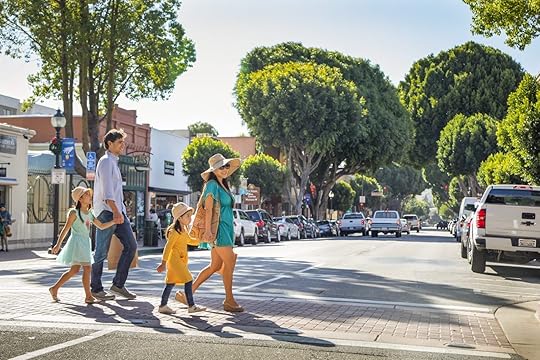
Photo: VisitSLO.com
If arts and crafts are more your style, there’s plenty to explore in San Luis Obispo. The city’s artistic spirit is present in the many murals dotted around town, along with the ever quirky Gum Alley, a narrow stretch of high walls between two buildings that have been entirely coated in gum (regularly power washed, of course).
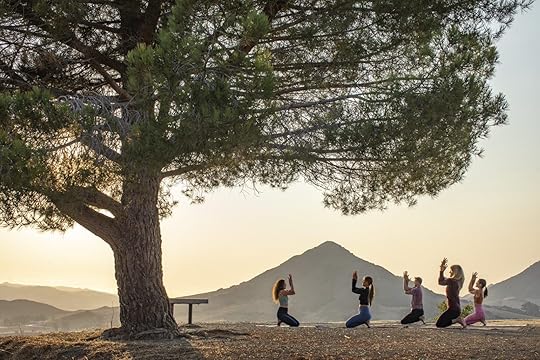
Photo: VisitSLO.com
San Luis Obispo also offers a myriad of physical activities and adventures. Whether that’s an aerial yoga class at The Center Slo or a gentle sunset hike up Terrace Hill. In the case of the latter, the easy 0.8-mile hike led to an unobstructed plateau where you can sit and enjoy the city below. I used it as an opportunity for a meditation session with a local guide, but others simply visited with friends or gazed at the view.
The Hat Bar by Kate KaneyView this post on InstagramA post shared by The Hat Bar by Kate Kaney (@thehatbarbykk)
I was particularly enthralled with a hat making experience at The Hat Bar by Kate Kaney. Kaney had seen hat making, where guests are invited to select a blank hat from their wide selection before choosing from an array of supplies with which to decorate the hat, take place in other cities before deciding to bring the concept home to her already well-known boutique, The Mercantile. I sifted through piles of colorful feathers, bright buttons, ribbons, leather, and twine like a kid in a candy shop, thoughtfully selecting items that would color match and offset one another while representing aspects of my own personality and hobbies. After, the staff helped secure the items to my hat and assisted with personal branding by burning my initials into the hat. Our entire group left with smiles on our faces, proudly donning our new creations.
The Mercantile and The Hat Bar: 950 Chorro St, San Luis Obispo, CA 93401
Horseback RidingTo evoke the cowboy past of the region, take a trail ride with Madonna Inn & Stables to the top of a nearby hill overlooking fields and rolling plains below. Trail rides are available to hotel guests and day visitors, with both novice and skilled riders welcome to take in the stunning landscape with experienced wranglers and gentle horses. As I rode Cactus, a brown and white pinto stallion, a prairie dog sat perched on a rock surveying the terrain, pink and yellow cactus flowers bloomed and a turkey vulture circled above.
Madonna Inn & Stables: 100 Madonna Road, San Luis Obispo, CA
Anam Cre’ Pottery StudioView this post on InstagramA post shared by Anam Cre Pottery Studio (@anamcre)
Spent a relaxing morning or afternoon at Anam Cre’ Pottery Studio, which offers classes, workshops, and a membership community where students can learn the fundamentals of working with clay. We learned to throw on the pottery wheel, sculpting beautiful mugs and later carved slabs of clay into cheese boards decorated with delicate stamp work.
Anam Cre’ Pottery Studio: 1243 Monterey St Suite 100, San Luis Obispo, CA 93401
Vibe Health LoungeThe city’s go-to healing center and day spa, Vibe Health Lounge offers guests a place to unwind and reconnect. After one of the best massages I’ve ever had (and I do pride myself on being a bit of a massage connoisseur), I indulged in state of the art holistic treatments such as a Chakra Crystal Vibroacoustic Sound Bed, a relaxing massage bed with colored chakra crystals and sound therapy; and the Lucia N°03 Light Experience, a form of light therapy meant to lower stress and provide deep relaxation.
Vibe Health Lounge: 1238 Monterey St, San Luis Obispo, CA 93401
The Center Yoga StudioView this post on InstagramA post shared by The Center Studio (@thecenterslo)
This yoga studio is the perfect place to reset and unwind. There are two non-heated studios and an infrared-heated studio where classes are held every day of the week, and guests can choose from a variety of different types of activity, including hot yoga, barre, HIIT, and pilates. One highlight is the aerial yoga, where hammocks act as a prop that helps you through various postures and ends with a savasana in the hammock.
The Center Yoga Studio: 672 Higuera St, San Luis Obispo, CA 93401
Where to eat in San Luis ObispoEbonyView this post on InstagramA post shared by Ebony • Authentic Ethiopian Food (@ebony_slo)
One sunny day, I spent the afternoon learning how to make injera, a form of sour fermented bread from Ethiopia, at Ebony with restaurant founder Helen Abraha, before lunching on her delicious food. A family run business, Abraha and team open up their restaurant every Thursday to Saturday offering organic, vegan, and gluten-free Ethiopian dishes with a focus on community and climate-friendly practices. Going from cooking for her actual neighbors to full blown restauranteur, Abraha has created a spot that’s a worthwhile stop.
Ebony: 4750 Allene Way, San Luis Obispo, CA 93401
MisturaMistura offers Peruvian gastronomy in downtown SLO along with a gourmet chocolatier. Chef Nicola Allegretta serves creative Peruvian dishes that balance the traditional and modern, from chicha morada pisco sours (complete with house-distilled pisco), to ají de gallina (a spicy chicken stew), to lomo saltado (a Peruvian stir fry), to mushroom or lobster ravioli and Peruvian sushi. Meanwhile, gourmet chocolates and desserts made by renowned pastry chef Florencia Breda are sold at Breda, the chocolatier inside Mistura. There, Breda’s sweets are edible works of art that could easily be found in any gourmet chocolatier in Paris, and taste even better. I sipped on my cold pisco sour and bit into a gooey, delicately painted chocolate, wondering whether I’d suddenly landed in Peru or Paris.
Mistura: 570 Higuera St, San Luis Obispo, CA 93401
Downtown San Luis Obispo Farmers’ MarketThis lively event runs for five blocks in the center of town every Thursday, showcasing food stalls, arts and crafts, street performers, and more. As elsewhere in town, farm to table is a way of life and vendors showcase the local bounty, which no doubt inspires the vibrant restaurant scene nearby. This being California, the market runs through winter from 6:00 PM to 8:30 PM November through February, and 6:00 PM to 9:00 PM March through October.
Downtown San Luis Obispo Farmers’ Market: Higuera Street downtown
NovoLocated in the heart of downtown SLO, this restaurant focuses on locally sourced ingredients used in globally inspired recipes, craft cocktails, an award-winning wine list, and a breathtaking atmosphere. Sitting under the trees which lean out over the creek, I once again felt as though I was somewhere else entirely.
Novo: 726 Higuera St, San Luis Obispo, CA 93401
Where to stay in San Luis ObispoWe hope you love the spaces we recommend! Just so you know, Matador may collect a small commission from the links on this page if you decide to book a stay.
Granada Hotel & Bistro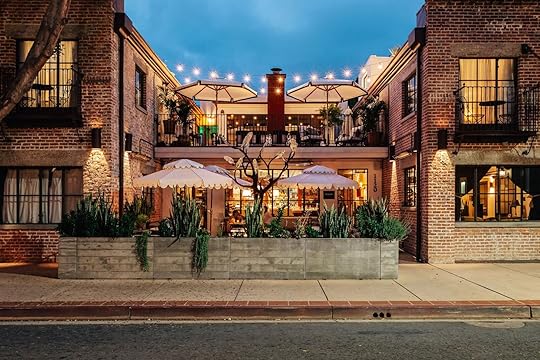
Photo: Expedia
After my cross-country flight from NYC and a quick 2-mile drive, I arrived in the city center, where I checked in to the enchanting Granada Hotel & Bistro.
This historic boutique hotel is in a building that was built in 1922. It went through several changes over the decades before being lovingly restored and reopened as the hotel in 2012. Within the original brick walls, the hotel offers 17 unique guest rooms, some large and spacious with a private terrace or balcony, others cozy and charming, but all with chic modern bathrooms, in-room fireplaces and decor serves as an ode to a bygone era. The hotel also has a popular restaurant serving up globally inspired, locally sourced cuisine in a leafy, garden setting; and Nightcap, a craft cocktail bar decked out in leather, wood, and exposed brick.
As I climbed the steps and entered the dimly lit lobby, my eyes adjusting from the bright sunlight outside, I noticed piano keys hung artistically above a set of old-fashioned key boxes behind the check in desk. I sipped a glass of cold California rosé poured by the concierge, and the scent of rosewood, copal, and amber (the hotel’s signature scent) filled the air. I raised my glass and settled into my chair as the hustle and bustle of New York City already felt like a lifetime away.
I stayed in one of the premiere suites, The Granada Queen, featuring a Juliet balcony, floor to ceiling windows, exposed brick, and a curved shower with a peekaboo window. I peered out over the balcony at the leafy street below and imagined myself sipping a coffee and reading my favorite book.
The Madonna Inn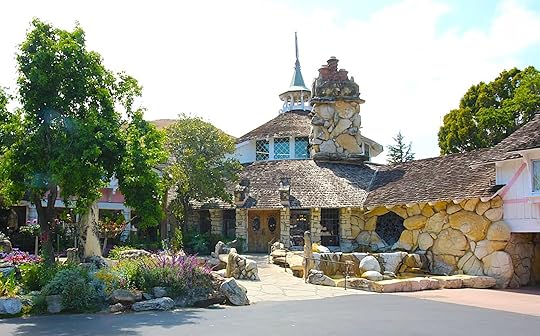
Constructed in 1958, the pseudo-Swiss-Alps exterior of the historic Madonna Inn gives way to a bright pink lobby accented by an overwhelming amount of flowers, hammered copper, stone, and western murals. It’s like if the Swiss Alps and 1950s Vegas had a baby, and then Elvis and Dolly Parton decorated. It’s wonderfully kitsch, and, quite frankly, I was all for it. The signature bright pink color is everywhere – from the pink brocade wallpaper to the pink leather seats topped with ornate gold banisters alongside pale pink tablecloths, to the bright pink carpet patterned with oversized pink roses and blue hydrangeas. In the evening, diners tuck into steak and drink from enormous, jewel-toned goblets while the enormous stone fireplace roars gently.
The Swiss-Alps style restaurant and bakery next door are equally iconic, serving world famous cakes like the Pink Champagne, a white cake with layers of Bavarian and whipped cream and topped with neon pink curls. The entire place is so grandiose and full of character and well worth a stop for photos or a snack in the restaurant and bakery, even if you’re not staying here.
July 17, 2023
How To See the World By Train
“It’s not about the destination, it’s about the journey” might be among the biggest clichés when it comes to travel, but when it comes to venturing out by train, it’s the truth and nothing but. Some rides are long and luxurious, others are quick, comfortable, and cheap. In all cases, trains are a way to reduce your carbon footprint while exploring this big, beautiful world. Whether you’re new to traveling by rail or you’re an experienced train traveler, these tips, guides, and routes will make your next journey even better — regardless of where you decide to go next.
6 Reasons Why I’ll Always Opt for Trains Over Planes
From VIP class to budget sleeper trains, here’s why traveling by train is better than by plane.
VisitExperts Predict the Future of Train Travel and It’s Looking as Bright as Ever
Faster speeds, better WiFi, and more will make trains more comfortable and convenient.
VisitWatchx
North AmericaPhoto: Nick Fox/Shutterstock
Traveling around North America often means covering huge distances, and in this day and age, flying is the preferred mode of transport for many. But train travel is certainly not a thing of the past. If you’re looking for high-speed rails along the coast of Florida, a train across the entirety of Canada, or a short trip among some of California’s most prestigious vineyards, well, there’s a train for that.
These Iconic Rail Journeys Showcase the Best of US Train Travel
See America’s great cities and most striking landscapes.
VisitThis Train Takes You 2,775 Miles Across Canada’s Cities, Prairies, and Rocky Mountains
Taking the train from Toronto to Vancouver, or vice versa, means crossing the second-biggest country in the world on the second-longest train trip.
VisitRide Through California’s Most Celebrated Wine Region on This Vintage Luxury Train
For indulging in gourmet food and celebrated wines, there’s no better option than the Napa Valley Wine Train in California.
VisitThis Florida Train Will Get You From the Miami To Orlando in Only Three Hours
Brightline, Florida’s high-speed train service, can take you from South Beach to Disney in style, comfort, and record time.
VisitHow To Take Your Dog or Cat on an Amtrak Trip
You don’t have to leave the pets at home.
VisitRide to the Bottom of a 1,200-Foot-Deep Gorge on This Colorado Train
This short, exceptional train ride takes you through the jaw-dropping Colorado Rockies and the narrow Royal Gorge.
VisitThe Best Airbnbs Along Amtrak’s Scenic Palmetto Route
Chugging through 11 states and 55 stations on the East Coast, Amtrak’s Silver Service/Palmetto route unites the Silver Meteor, the Silver Star, and the Palmetto trains. These First-Class Airbnbs along the route are located at key destinations in New York, Pennsylvania, Maryland, South Carolina, and more for a relaxing way to see the East Coast by train.
Extend Your Trip at These Airbnbs Along Amtrak’s Pacific SurflinerConnecting San Diego with San Luis Obispo, Amtrak’s Pacific Surfliner weaves along 351 miles of golden California coastline. Although possible to get from A to B over the course of a day, breaking the route down lets you mix and match Southern and Central California’s finest cities, hiking trails, beaches, wineries, and amusement parks.
The Definitive Sleeper Train Packing ListThe only way to elevate a scenic train journey is to clamber aboard for the night. Sleeper trains chug their way through North America’s wildest national parks, traverse entire countries in Asia, and recapture the golden age of European travel. Comfort, entertainment, and practicality are paramount when prepping your pack list for an overnighter on a train. Whether you’re holing up in a luxury suite or roughing it in the communal berths, these are the essentials for any sleeper train packing list.
See Canada’s Atlantic Coast at These Beautiful Airbnbs Along VIA Rail’s ‘The Ocean’ RouteThe Ocean strings together 13 cities and towns in Atlantic Canada. Originally “The Ocean Limited” this 800-mile journey has provided a scenic, comfortable, and sustainable method of getting from Montréal to the Port of Halifax, Nova Scotia, since 1904.
EuropePhoto: Look Studio/Shutterstock
A half-dozen European low-cost airlines might be vying for your attention by offering what seems like the cheapest tickets you’ve ever seen, but know that no matter how hard they try, they can’t beat the convenience, comfort, and low price of Europe’s railways. The rail network in England, France, Italy, Spain, Portugal, Germany, and farther afield is massive, snaking all over the map to get you anywhere you need to go. The best part? You won’t need to trek to the airport, go through security, or pay big luggage fees. In some cases, you’ll get to your destination just as fast — if not faster.
Steam Trains, Sleepers, and Underwater Tunnels: The 7 Most Iconic Train Rides in Europe
There are plenty of notable and gorgeous European train routes, but these are some of the finest.
VisitThe Train Is the Best Way To See Portugal’s Stunning Landscapes From Lisbon To Porto
There are multiple Lisbon to Porto trains that run daily. Most are direct, many are high-speed trains, and they’re all cheap and comfortable.
VisitThese Trains Will Take You From Rome To Venice for the Ultimate Trip Across Italy
Everything you need to know about the train journey between Rome and Venice, including the price, the frequency, and how to score deals.
VisitThe Complete Guide To Navigating Each Paris Train Station
Paris has six train stations, each of which serves a different area of France. This guide to Paris’ train stations will prevent any mix-ups.
VisitThis Sleeper Train Will Take You From London To the Wilds of Scotland
The Caledonian Sleeper is a comfortable train that connects London to cities in Scotland overnight.
VisitThe Most Expensive Train Ride in the World Comes With Marble Bathrooms and Queen-Size Beds
The Orient Express is the most famous sleeper train in the world and certainly one of the most desirable to ride for any rail enthusiast.
VisitSustainability Breakdown: The True Carbon Footprint of Trains Versus Planes on Popular Routes
Train travel offers scenic views and a more pleasant overall experience than flying. For starters, there’s no need to stand in a long security line only to have your toothpaste taken simply because the tube won’t fit inside the eye of a needle. Notably, train travel is also significantly better for the environment than air travel. Many popular flight routes around the world have corresponding train routes for a more sustainable approach to travel.
The Most Scenic and Luxurious Train Rides in the World, According To the Man in Seat 61The Man in Seat 61 has turned train travel into his way of life. A former station manager for London’s Charing Cross, London Bridge, and Cannon Street stations, and various other jobs in the rail industry, he now travels the world by train and runs a popular blog detailing his journeys. His blog, “The Man in Seat 61,” aims to inspire people to forego the cold, uninspiring airport experience for a more scenic and sustainable trip. We spoke to the Man himself to get his insights on the best train rides in the world, and what the future of train travel looks like from his expert point of view.
7 Historical Trains and Routes To Experience the Golden Age of TravelBack in the day, train travel was glamorous. You’d have a plush private car, access to fabulous catered meals, and attentive staff willing to cater to your every whim. And needless to say, the interiors of vintage train cars were downright gorgeous. The slow travel movement has helped revitalize some of these trains and routes around the world.
Watchx
Get out therePhoto: Creative Family/Shutterstock
The joys of train travel aren’t limited to North America and Europe. South Africa and Australia are home to multi-day, luxurious trains that are so opulent they’re basically five-star hotels on wheels, while Japan and China can take you from point A to point B at speeds you never imagined were achievable on land. As for India, well, the railway network is so extensive that you’ll need to consult our thorough guide to make heads or tails of it.
The Inca Rail To Machu Picchu Is the Prettiest Train Ride in South America
Traveling by train in Peru is not just a practical way to move between major destinations, but also a fantastic way to soak up the incredible landscape.
VisitEverything You Need To Know To Ride the World’s Fastest Passenger Train
How to take China’s Shanghai Maglev Train, including its route, the cost of a ticket, how fast it goes, and how you can ride it.
VisitHow To Explore Japan on the Country’s Bullet Trains
A guide to Japan’s Shinkansen trains, plus information on buying tickets, other train lines, and ideas on day trips from Kyoto and Tokyo.
VisitRide This Train for 994 Miles Across South Africa’s Mountains, Deserts, and Biggest Cities
The Blue Train, one of the most luxurious trains in the world, travels from Cape Town to Pretoria, a journey of 994 miles done in 31 hours.
VisitA Guide To Indian Railways: How To Easily Explore the Country by Train
What to know about the massive Indian Railways train system, including how to book tickets, what codes mean, train types, and top routes.
VisitSee Australia’s Hills, Plains, Red Centre, and Topical Top End on This 1,851 Mile Train Ride
Australia’s Ghan Train is a luxury operation that takes you between Adelaide in the South and Darwin in the north.
VisitCREDITSEditorial lead
Morgane Croissant
ContributorsAlex Bresler, Tim Wenger, Suzie Dundas, Eben Diskin, Hannah D. Cooper, Daniel James Clark, Mariellen Ward, and Matthew Dursum
Special ThanksRyan Dury
Hotels Near Machu Picchu Perfect for Post-Trek Relaxation

No matter how many photos you’ve seen, nothing prepares you for the wonderment of Machu Picchu. Abandoned a century after completion and forgotten for over three, the Lost City is now Peru’s crowning relic of the Inca Empire. Any Machu Picchu vacation starts with a good night’s sleep. Named for its thermal springs, Aguas Calientes (also known as Machu Picchu Pueblo) is the location for the majority of hotels near Machu Picchu. Otherwise, it’s possible to take a day trip from the Sacred Valley either by hopping on the train at Ollantaytambo or booking a tour. Across both areas, these are the best Machu Picchu hotels for exploring the sacred city of the Incas and connecting with Peruvian culture.
Trekking the Inca Trail? Check out Matador’s guides to everything you need to thrive on the trail: The perfect backpack for every type of traveler, from hostelers to hikers 10 must-haves for the traveling yogi What to pack for an epic trekking adventure in Latin America All the fall camping gear you need to have an epic trip All the outdoor gear you need to keep moving on the trail this spring These Airbnbs near Machu Picchu provide a historical experience in the Andes
We hope you love these hotels near Machu Picchu! Just so you know, Matador may collect a small commission from the links on this page if you decide to book a stay. Listed prices are accurate as of the time of publication.
Inkaterra Machu Picchu Pueblo Hotel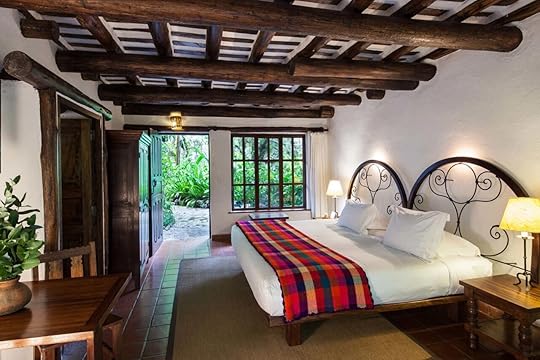 Photo: Expedia
Photo: Expedia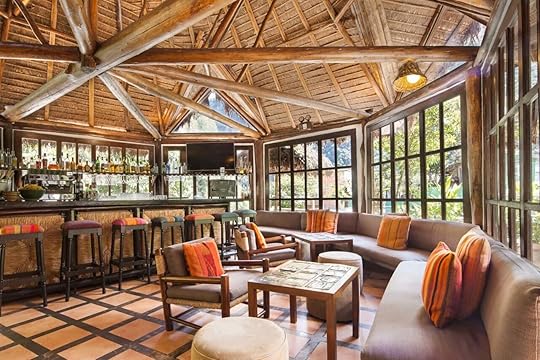 Photo: Expedia
Photo: Expedia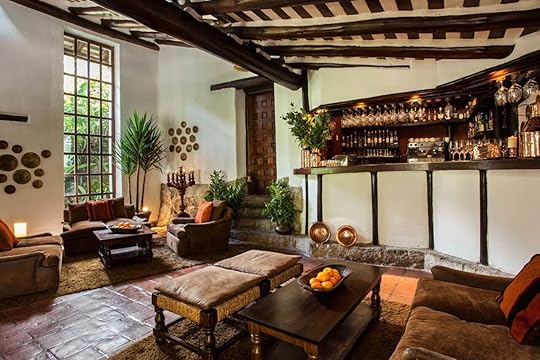 Photo: Expedia
Photo: Expedia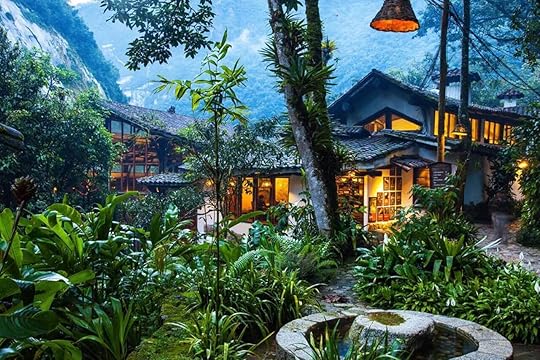 Photo: Expedia
Photo: ExpediaSee more photos
Address: Aguas Calientes 08681, Peru
Rates from: $493/night
Minutes from the Aguas Calientes train station, you can’t find a more convenient base than the 5-star Inkaterra Machu Picchu Pueblo Hotel. All rooms come with slippers crafted from recycled materials and eco-friendly bathing products. If you’re hankering for something extra, superior rooms feature open fireplaces or a complimentary bottle of pisco. Top-tier suites have a private garden or plunge pool.
Breakfast is available from the crack of dawn in the riverside restaurant while scores of eateries are within walking distance of the hotel. Soothe aching muscles with a hot stone massage at the onsite Unu Spa in one of the most popular luxury hotels near Machu Picchu.
Sumaq Machu Picchu Hotel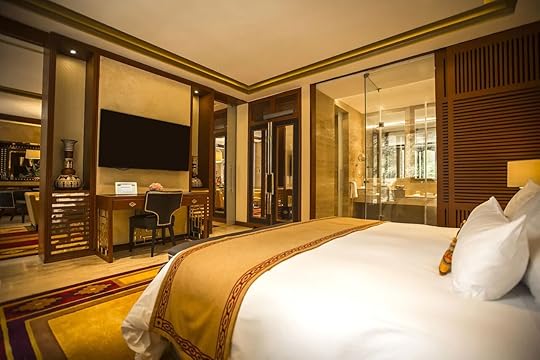 Photo: Expedia
Photo: Expedia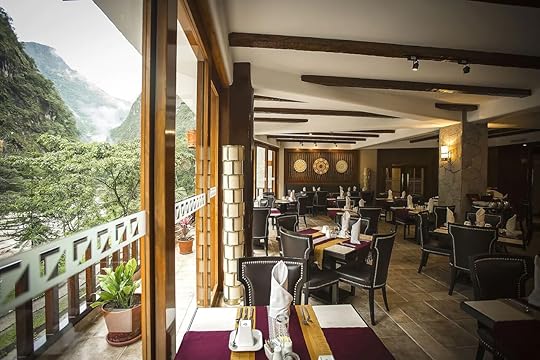 Photo: Expedia
Photo: Expedia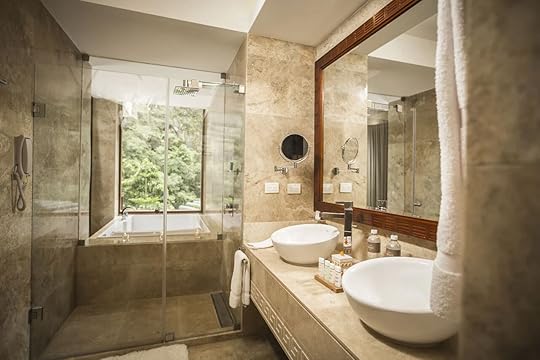 Photo: Expedia
Photo: Expedia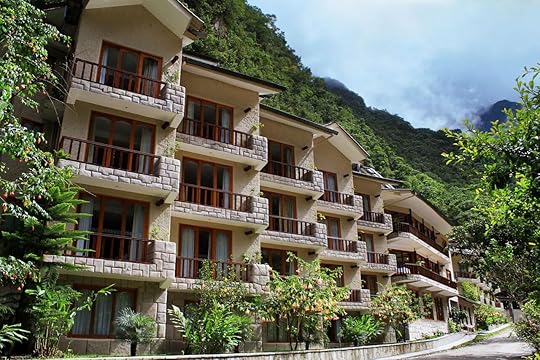 Photo: Expedia
Photo: ExpediaSee more photosAddress: Inca City of Machu Picchu, Lote 3, Avenida Hermanos Ayar Mz 1, Aguas Calientes, Peru
Rates from: $390/night
Skirting the edge of town, warm-hued rooms at the Sumaq Machu Picchu Hotel are personalized with Andean motifs and pre-Colombian art. Garden view units enhance the sense of calmness at this low-key luxe hotel but a Vilcanota River view is a justifiable upgrade. All rooms have a tub for that much-needed post-hike soak although only the suites feature a Jacuzzi.
One of the best Machu Picchu hotels for families, kids can try their hand at baking Andean cookies or wind down with a tee-shirt painting kit. On the other hand, adults may participate in their own Andean wedding ceremony or explore the citadel with a shaman.
Sanctuary Lodge Machu Picchu, Belmond Hotel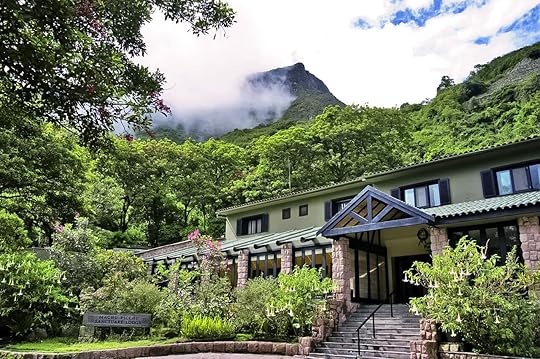 Photo: Expedia
Photo: Expedia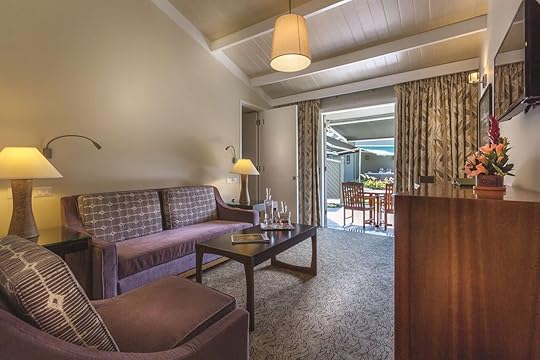 Photo: Expedia
Photo: Expedia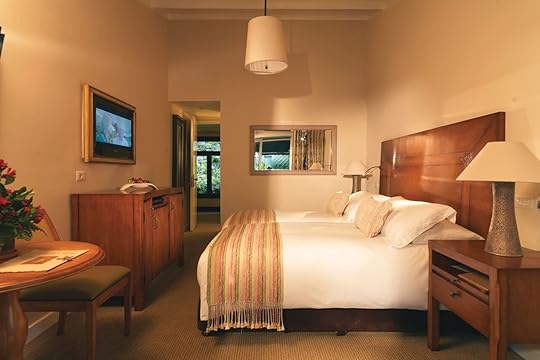 Photo: Expedia
Photo: Expedia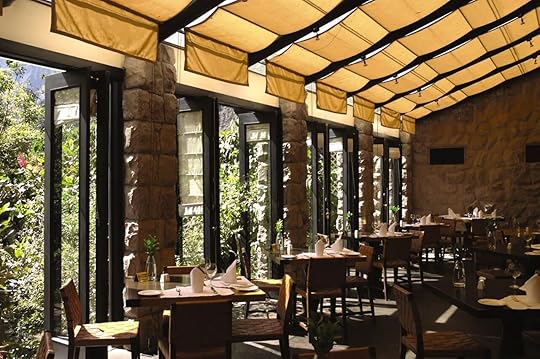 Photo: Expedia
Photo: ExpediaSee more photosAddress: Machu Picchu, Carretera Hiram Bingham Km 7.5, 08680, Peru
Rates from: $1,375/night
As the only hotel in Machu Picchu, Sanctuary Lodge gets top marks for views. Sitting 7,700 feet above sea level, the Belmond property is steps from the entrance. Comprising 31 rooms and suites, the lodge retains an intimate vibe with the majority of units coming with private patios.
Given the remote setting of Sanctuary Lodge Machu Picchu, reservations are full board. Ingredients are plucked from the hotel’s plot on the slopes of the Lost City. Put your name down for the exclusive First Light tour or surprise your spouse with a Sunrise Breakfast overlooking Huayna Picchu. Spiritual experiences include cocoa leaf readings and offerings guided by an Andean shaman.
Rio Sagrado, A Belmond Hotel, Sacred Valley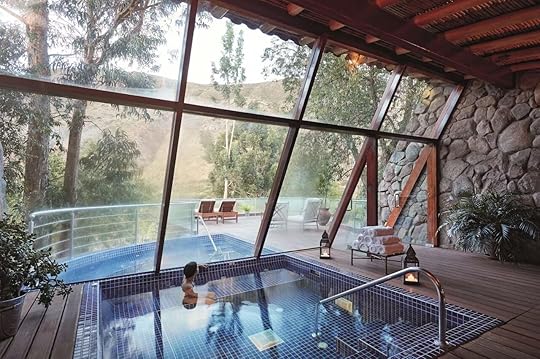 Photo: Expedia
Photo: Expedia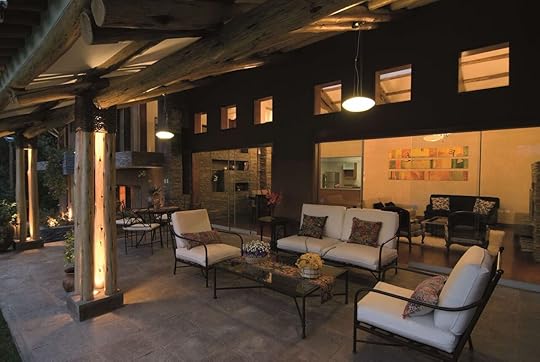 Photo: Expedia
Photo: Expedia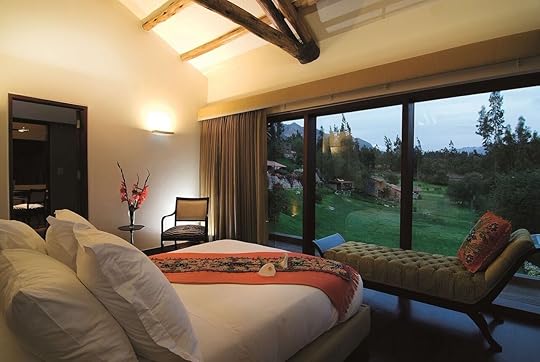 Photo: Expedia
Photo: Expedia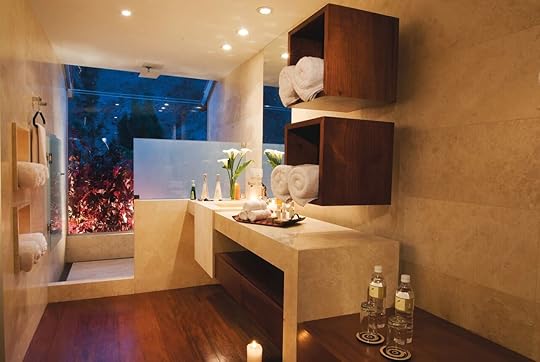 Photo: Expedia
Photo: ExpediaSee more photos Address: Km. 75.8, Carretera Urubamba-Ollantaytambo, Valle Sagrado, Urubamba, Peru
Rates from: $605/night
The second of two Belmond hotels near Machu Picchu, the Rio Sagrado, Sacred Valley recreates a rural Peruvian village complete with free-roaming alpacas. As with its sister up the mountain, the restaurant serves seasonal cuisine sourced from its own ecological garden. Al fresco dining experiences are held periodically on the grounds while bespoke picnics are available for couples and small groups.
Constructed from natural stones and wood, terrace rooms, suites, and villas are sanctuaries of calm. All come with a patch of private garden and Wi-Fi but television is strictly off-limits at this luxury Machu Picchu hotel near Ollantaytambo train station.
El MaPi Hotel by Inkaterra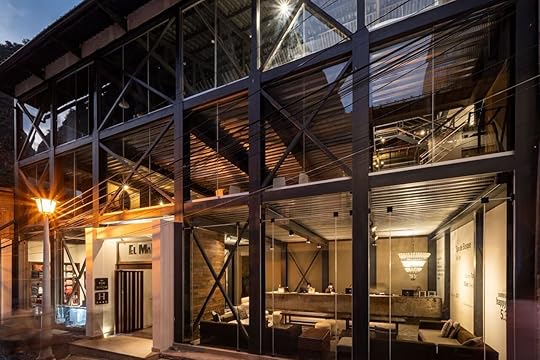 Photo: Expedia
Photo: Expedia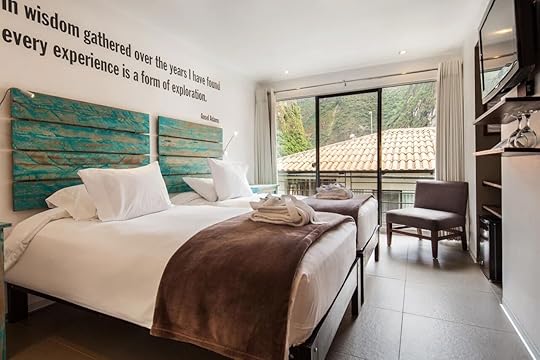 Photo: Expedia
Photo: Expedia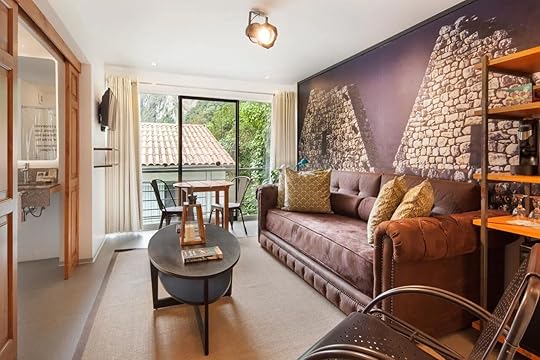 Photo: Expedia
Photo: Expedia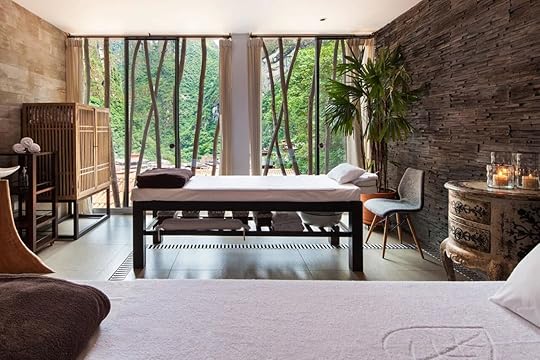 Photo: Expedia
Photo: ExpediaSee more photosAddress: Ave Pachacutec 109, Aguas Calientes 08681, Peru
Rates from: $200/night
The El MaPi Hotel by Inkaterra is a larger and more modern alternative to the Inkaterra Machu Picchu Hotel. Situated on the northern side of the Río Agua Caliente, the El MaPi Hotel is a tad closer to the hot springs. Rooms are minimalist in style with travel quotes emblazoned on walls and panoramic windows overlooking the bustling town center.
A wellness spa roosts on the top floor with views over the cloud forest. Amenities extend to a pine sauna, a heated plunge pool, and a full-service treatment menu. Start your day with a nutritious breakfast in La Cafeteria and wind down with a buffet dinner in the evening at this half-board Machu Picchu hotel.
Casa del Sol Machu Picchu Boutique Hotel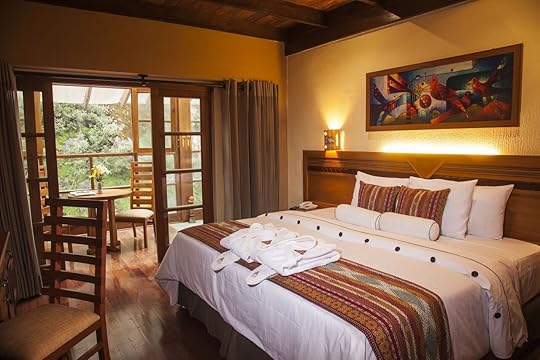 Photo: Expedia
Photo: Expedia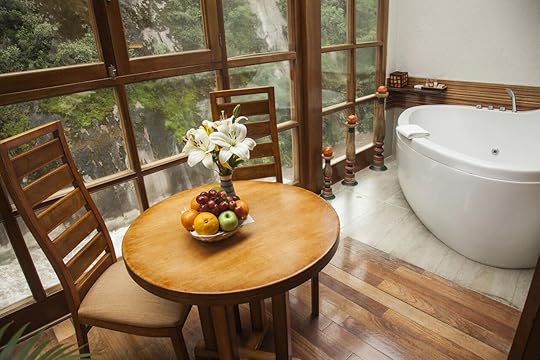 Photo: Expedia
Photo: Expedia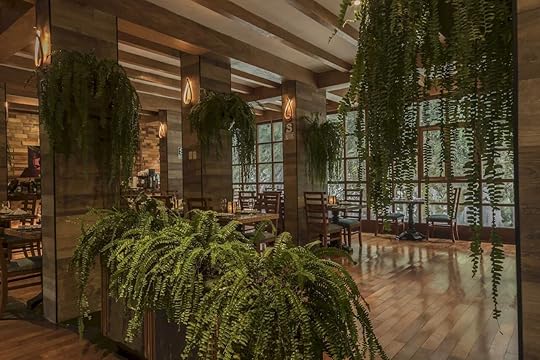 Photo: Expedia
Photo: Expedia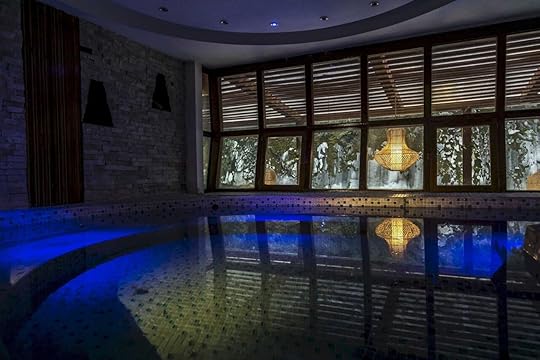 Photo: Expedia
Photo: ExpediaSee more photosAddress: Av. Imperio de los Incas Nº 608, Machu Picchu Pueblo, Mapi, Peru
Rates from: $224/night
Close to the train station, riverside, and restaurants, the Casa del Sol Machu Picchu Boutique Hotel is a stellar launchpad for hiking and thermal dipping. Rooms fuse traditional Andean décor with contemporary comforts with the best units coming with a river view. Perfect for a couple, the suite features a covered balcony with a hot tub and breakfast nook.
One of the best Machu Picchu hotels for cultural experiences, the lodge organizes guided trips to the site while cooking classes and Pisco Sour workshops are available closer to home. And of course, the spa beckons after a grueling couple of days of trekking.
Tierra Viva Cusco Machu Picchu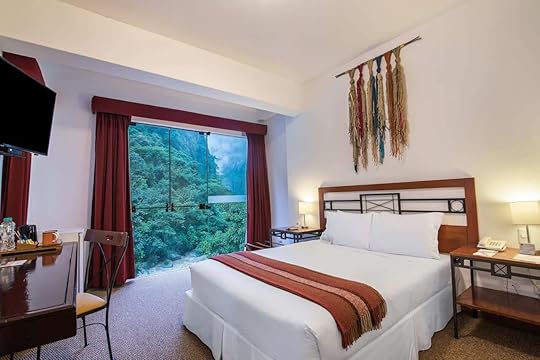 Photo: Expedia
Photo: Expedia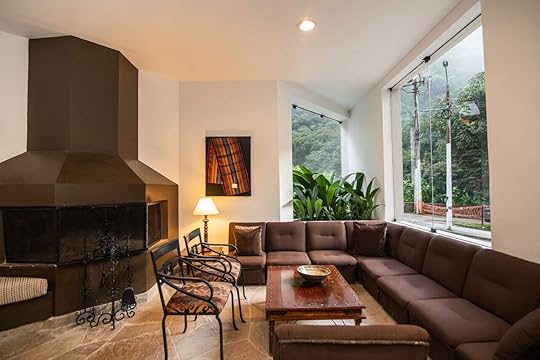 Photo: Expedia
Photo: Expedia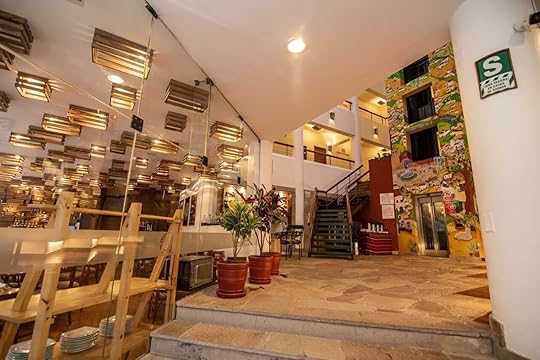 Photo: Expedia
Photo: Expedia Photo: Expedia
Photo: ExpediaSee more photosAddress: Avenida Hermanos Ayar 401, Aguas Calientes 08681, Peru
Rates from: $130/night
Of all the Machu Picchu hotels in Aguas Calientes, Tierra Viva is closest to the Camino Peatonal trailhead and the Butterfly Farm. Included in the rate, the buffet breakfast opens at 5 a.m. sharp. Private dining, pachamanca experiences, and cooking classes are all available to supplement your stay in Peru.
Attractive to all budgets, bright and spacious rooms are more spartan in style. Expansive windows allow the light to circulate and simple textile wall hangings add depth. Suites have the added perk of a mountain-view terrace while the signature suite has a Jacuzzi corner tub.
Las Qolqas EcoResort Ollantaytambo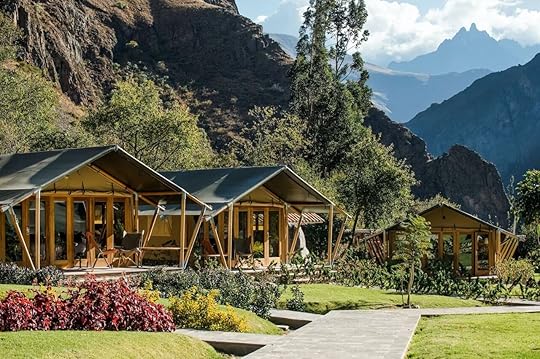 Photo: Expedia
Photo: Expedia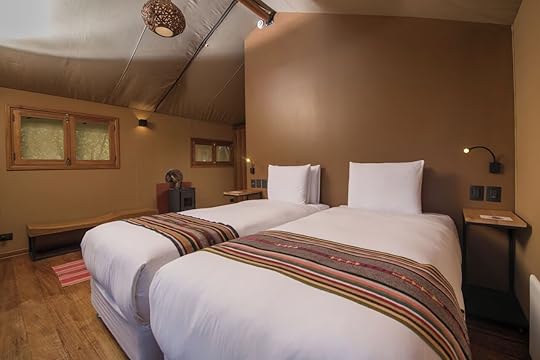 Photo: Expedia
Photo: Expedia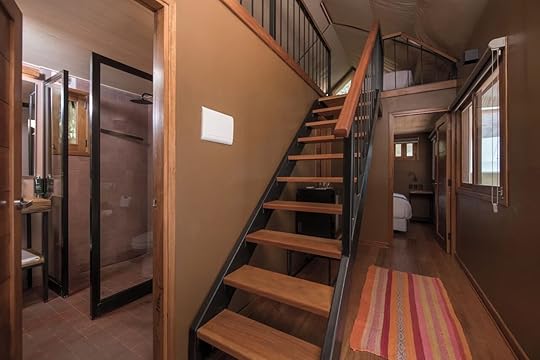 Photo: Expedia
Photo: Expedia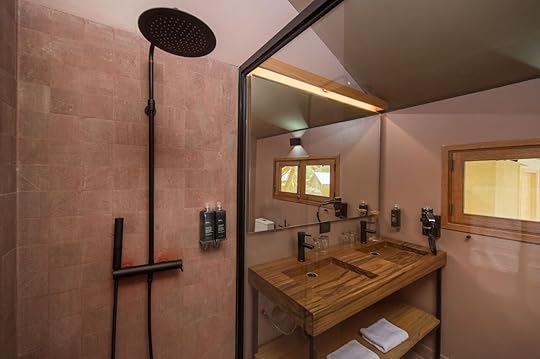 Photo: Expedia
Photo: ExpediaSee more photosAddress: Cam. a Willoq Km 2, Ollantaytambo 08676, Peru
Rates from: $214/night
The most adventurous hotel at Machu Picchu, Las Qolqas EcoResort Ollantaytambo is made up of individual eco-luxe bungalows. These tented cabins accommodate two, four, or eight guests and open out onto a private patio facing the mountains. Each unit contains a hotel-standard bathroom and wood stove for cozy evenings.
Onsite dining changes as per the season with options for vegans and vegetarians and potato-based local wine. Picnics are available and yoga, meditation, and dance classes are hosted in the geodesic dome. A short drive from Ollantaytambo train station, the upscale glamping resort is convenient for a day trip to Machu Picchu and Sacred Valley.
Del Pilar Ollantaytambo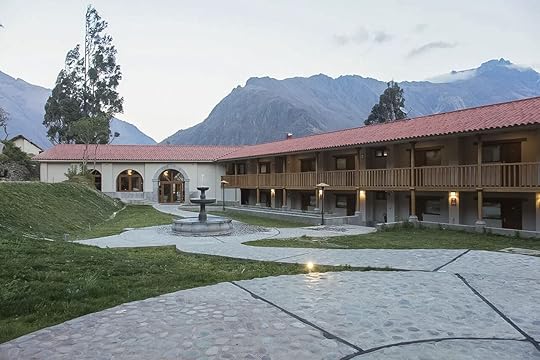 Photo: Expedia
Photo: Expedia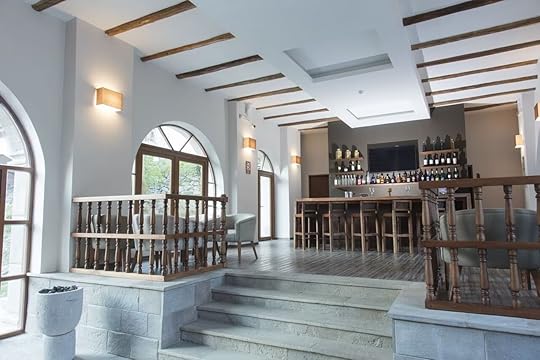 Photo: Expedia
Photo: Expedia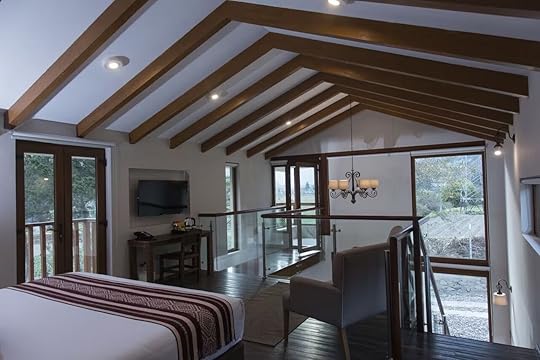 Photo: Expedia
Photo: Expedia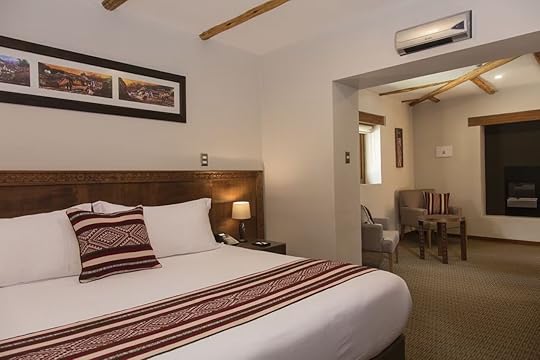 Photo: Expedia
Photo: ExpediaSee more photosAddress: QMG8+H57, Chilca, Ollantaytambo, Peru
Rates from: $70/night
Close to KM82, Del Pilar Ollantaytambo is one of the best hotels in Machu Picchu near the Inca Trail. Guide services are available to the Lost City as well as other sights in the Sacred Valley. The property offers free parking and bicycle rentals, both of which are handy in this off-the-grid setting.
The lodge comprises unfussy rooms with a high level of comfort and cleanliness. All grant valley and mountain views while the bungalow accommodates a family or small group. Ideal for a decent night’s kip before starting the multi-day trek, rates at Del Pilar include breakfast and you can look forward to a massage upon return from the sanctuary.
Rupa Rupa High Jungle Eco B&B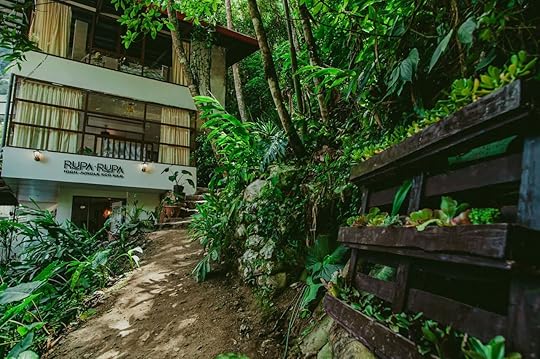 Photo: Expedia
Photo: Expedia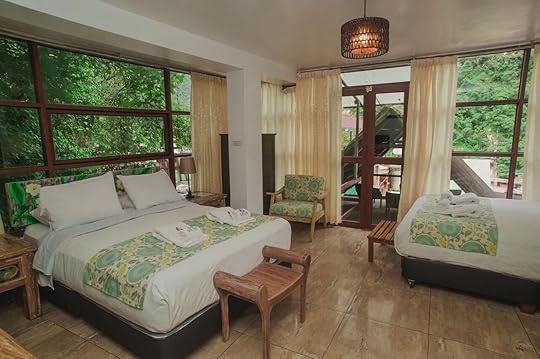 Photo: Expedia
Photo: Expedia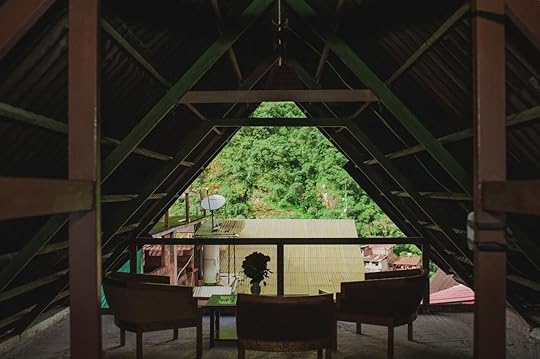 Photo: Expedia
Photo: Expedia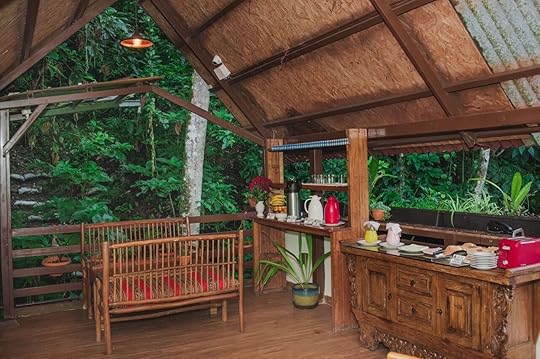 Photo: Expedia
Photo: ExpediaSee more photosAddress: Pje. Huascar N° 104, Aguas Calientes 08681, Peru
Rates from: $92/night
In terms of budget-friendly hotels near Machu Picchu, you’re onto a winner with the Rupa Rupa High Jungle Eco B&B. Halfway up a rainforest-clad mountain, this boutique property consists of fresh rooms accented with rustic headboards, monstera wall art, and wall-to-wall windows.
Rolled into the rate, the nutrient-packed breakfast will fire you up for a day roaming the site. The location is convenient for the cafes, grocery stores, and thermal baths. Word of warning – you’ve got 100 steps to contend with to reach reception. On the plus side, it’s all good practice for a couple of days of hiking.
Palacio del Inka, a Luxury Collection Hotel, Cusco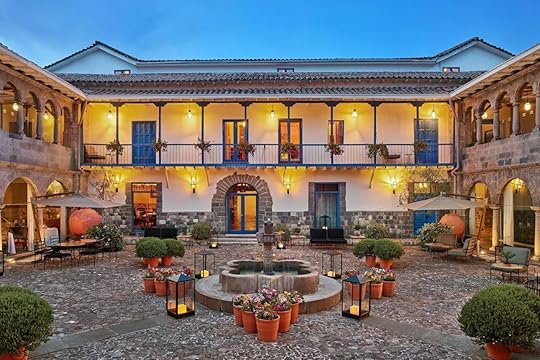 Photo: Expedia
Photo: Expedia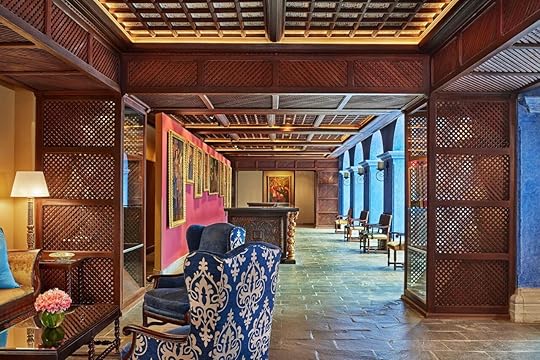 Photo: Expedia
Photo: Expedia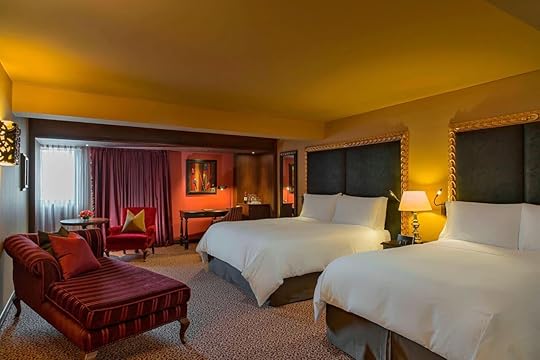 Photo: Expedia
Photo: Expedia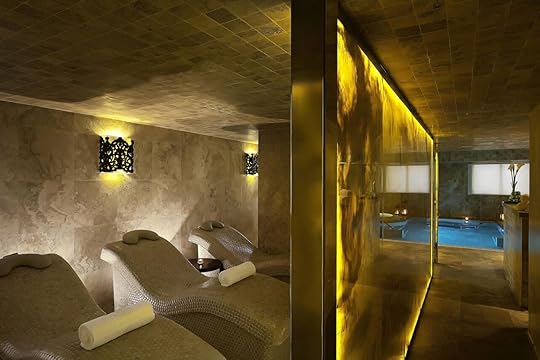 Photo: Expedia
Photo: ExpediaSee more photosAddress: Santo Domingo 259, Cusco 08002, Peru
Rates from: $325/night
Seeing as you’ll start your Machu Picchu vacation in Cusco, you may need accommodation in the city for a night or two. Centrally located, the Palacio del Inka, A Luxury Collection Hotel by Marriott is a 15-minute walk from San Pedro train station.
Classic rooms are accented in scarlet and gold tones with Frette linens on the bed. Suites in the mansion follow suit but are embellished with lavish wallpapering and decorative furniture. The spa welcomes hotel residents and guests staying elsewhere. There’s no shortage of where to eat nearby although the property bar isn’t a bad place to sip your first – or final – Pisco Sour.
What is Machu Picchu?Machu Picchu is an Incan citadel in the Peruvian Andes. Watched over by Huayna Picchu, La Ciudadela comprises close to 200 residences, temples, tombs, and bathhouses. Landmarks include the Temple of the Sun, the House of the High Priest, and the Royal Tomb. It was declared a UNESCO World Heritage Site in 1983.
When was Machu Picchu built?Thought to have been created as an estate for the emperor Pachacuti, Machu Picchu was constructed in the mid-15th century. Abandoned only a century after completion due to fears of a potential invasion, the archaeologist Hiram Bingham happened upon the citadel in 1911.
What does Machu Picchu mean?Also spelled Machupijchu, Machu Picchu means “Old Mountain” in the Quechua language. Huayna Picchu means “Young Mountain”.
Why is Machu Picchu important?UNESCO recognizes Machu Picchu as one of the most outstanding artistic, architectural, and land-use achievements. Although archaeologists believe Machu Picchu was first and foremost a royal estate, most concur the site held wider religious and spiritual importance to the Inca Empire. The construction methods were ingenuous – even with the absence of mortar, the buildings could withstand earthquakes. Today, Machu Picchu remains a beacon of cultural significance for the indigenous people of the region.
Where is Machu Picchu located?The Lost City of the Incas is located in the Machupicchu District of southern Peru’s Urubamba Province. It’s ensconced within the Andes Mountains of Peru on the eastern slopes of the Cordillera de Vilcabamba – a range that meets the Amazon basin.
Where is Machu Picchu on a map?On a map of Machu Picchu, you’ll see that the ancient citadel is extremely isolated and surrounded by a cloud forest. While it looks nearby, Agua Calientes – the location of the closest hotels and Airbnbs near Machu Picchu – is a two-hour hike via Camino Peatonal. There is only one hotel in Machu Picchu: the Sanctuary Lodge Machu Picchu. The Sacred Valley lies to the east and Cusco to the southeast.
What is the elevation of Machu Picchu?The saddle of the mountain where Machu Picchu is located sits at 7,972 feet above sea level. Huayna Picchu, the iconic peak, summits at 8,835 feet. Terraced layers provided a solution to the mountainous terrain.
What city is Machu Picchu in?Cusco is the closest city to Machu Picchu. Far closer and purpose-built for tourism, the town of Aguas Calientes is where you’ll find the closest hotels near Machu Picchu.
How to get to Machu PicchuAll Machu Picchu vacations start in Cusco. From there, you can take a train to Aguas Calientes (or Machu Picchu Pueblo) where most of the hotels in Machu Picchu are located. Most travelers hike to the citadel from town but buses are available for those who need them. Otherwise, you can get to Machu Picchu by trekking the 26-mile Inca Trail.
How to get to Machu Picchu from LimaJumping on a plane is the fastest way of getting from Lima to Cusco. Flight time is one and a half hours whereas by bus you’re looking at 22 hours. Once in Cusco, you’ll catch a train operated by PeruRail or IncaRail.
What airport is near Machu Picchu?Alejandro Velasco Astete International Airport (CUZ) in Cusco is the closest airport to Machu Picchu. Cusco Airport is just a short flight from Jorge Chávez International Airport (LIM) in Lima. 
Matador Network's Blog
- Matador Network's profile
- 6 followers



